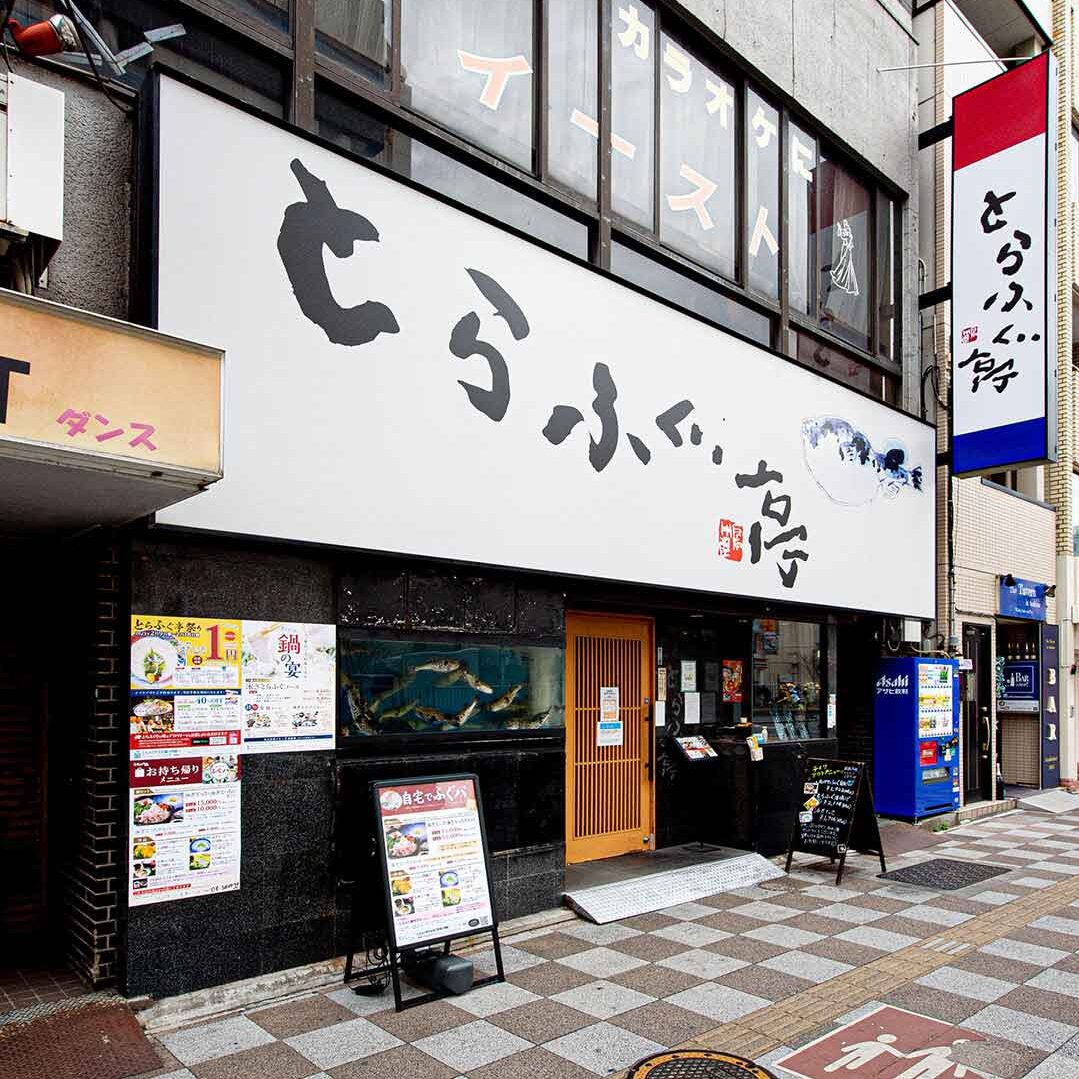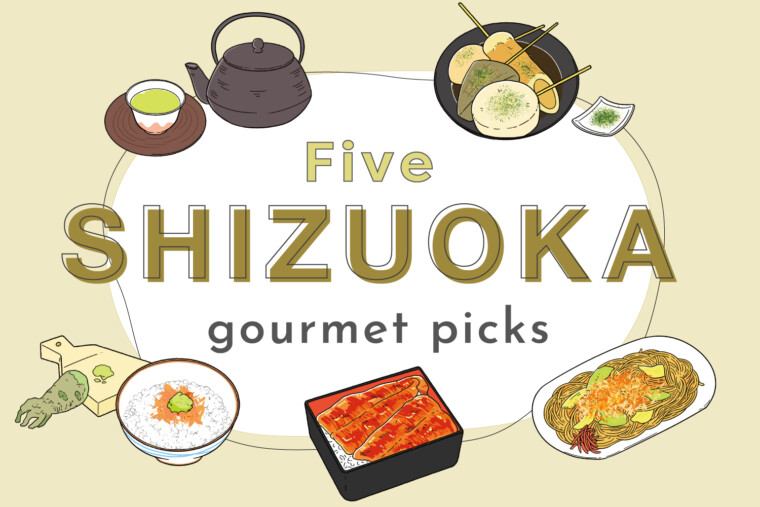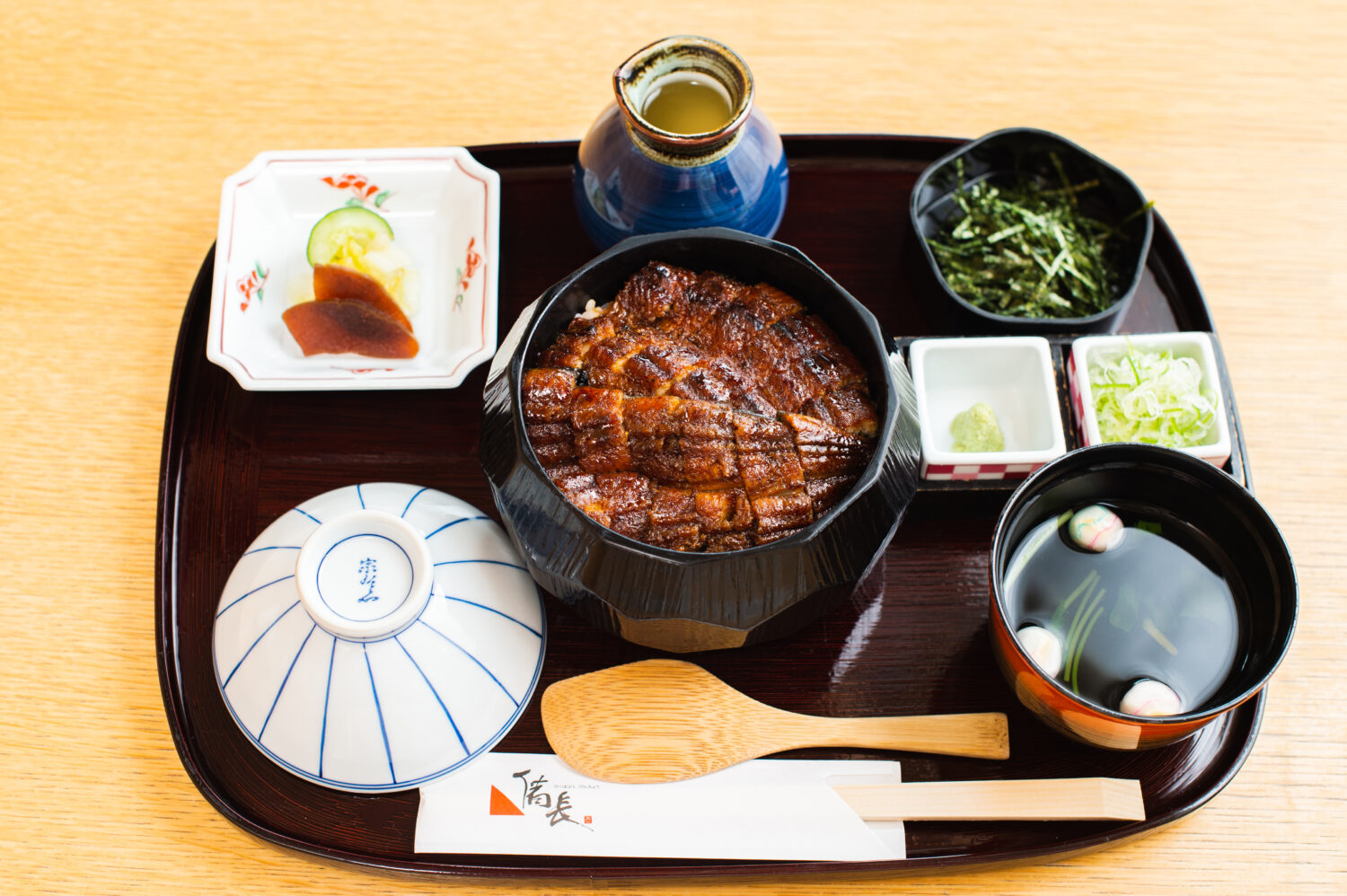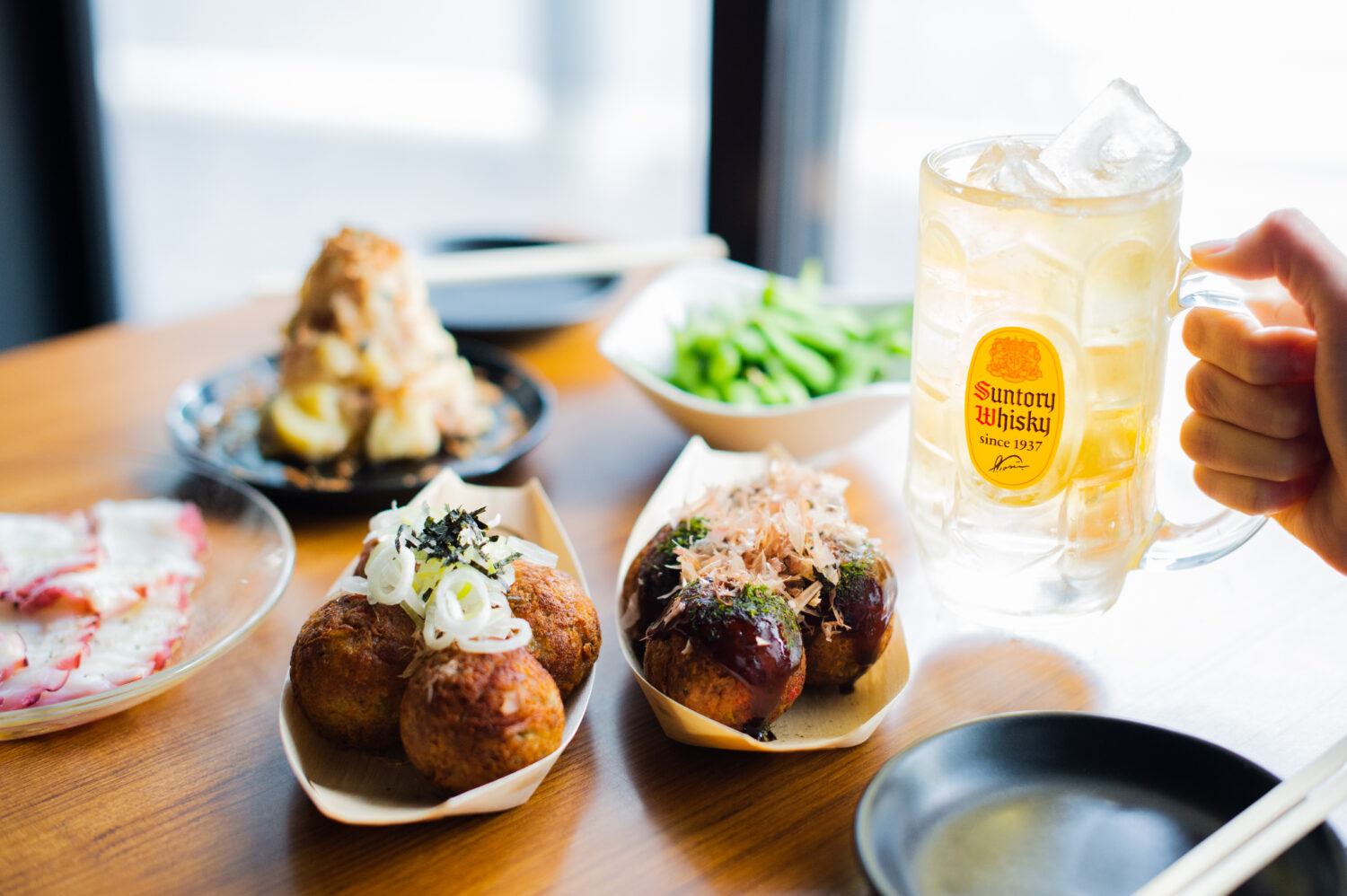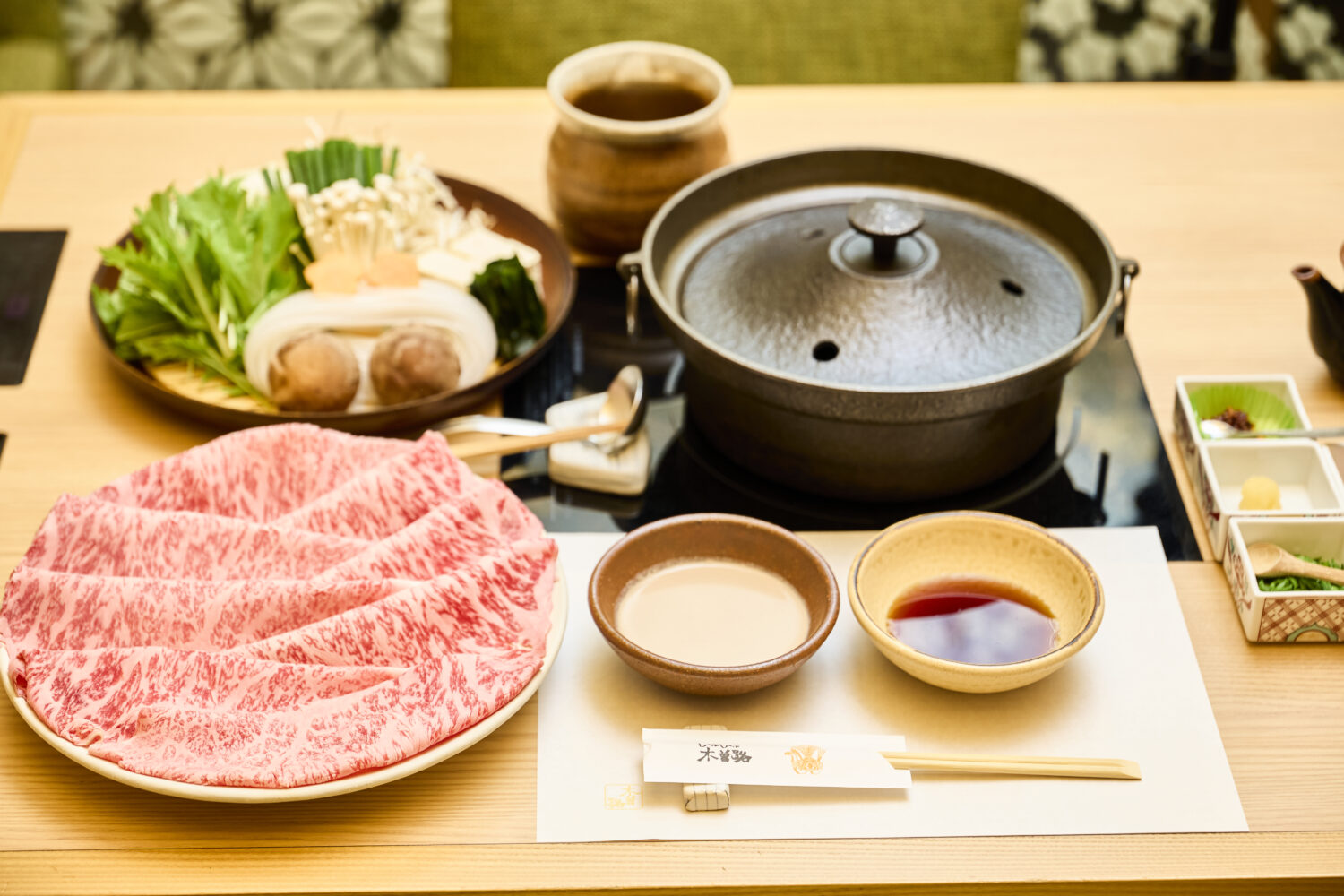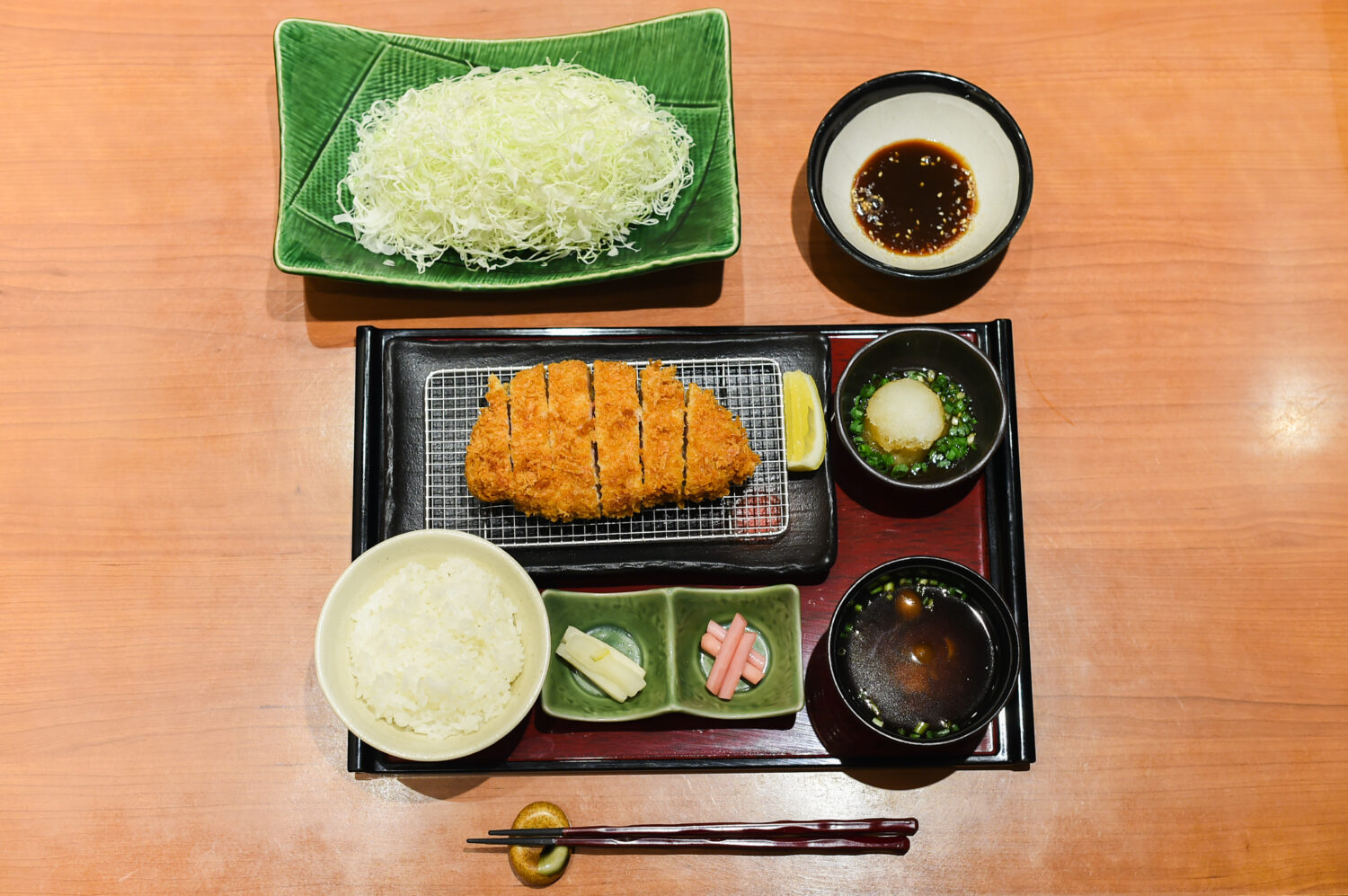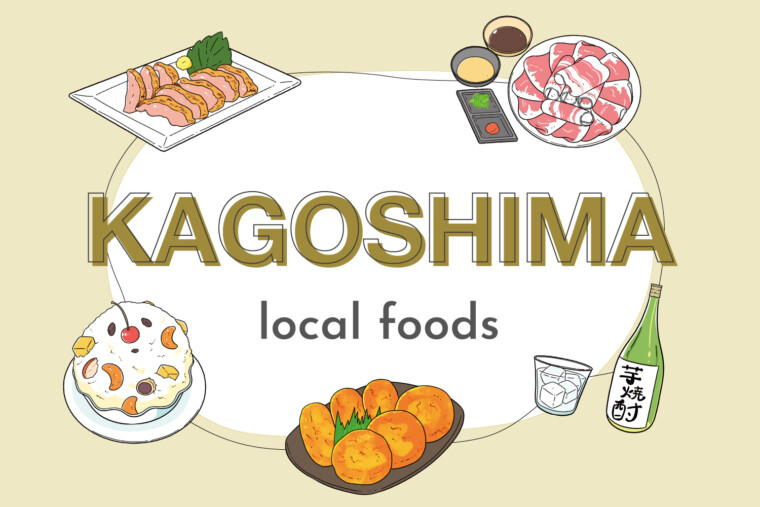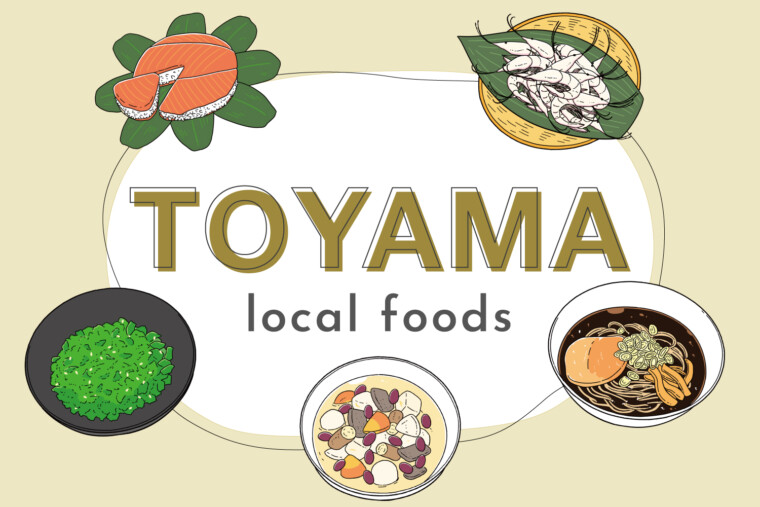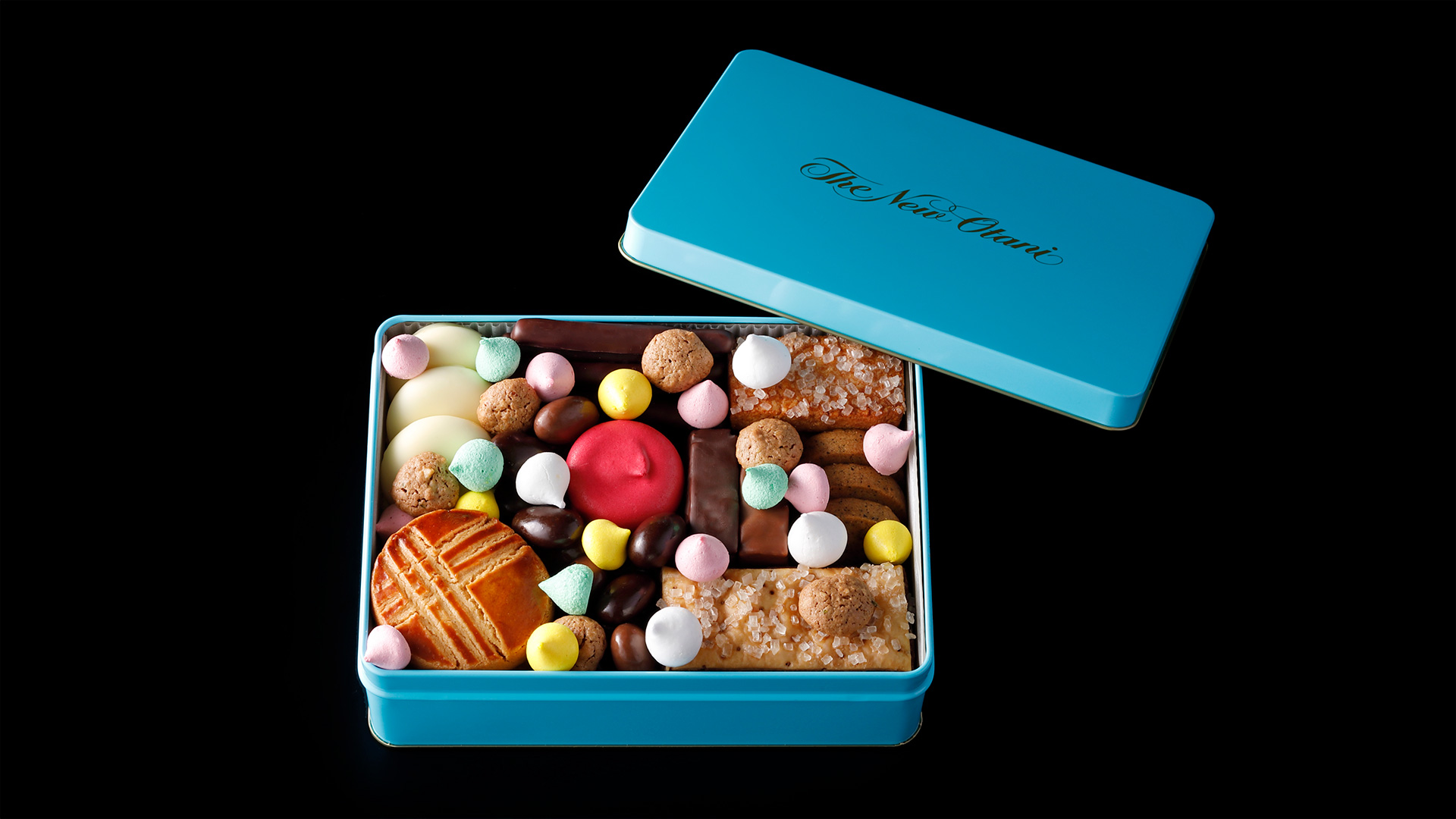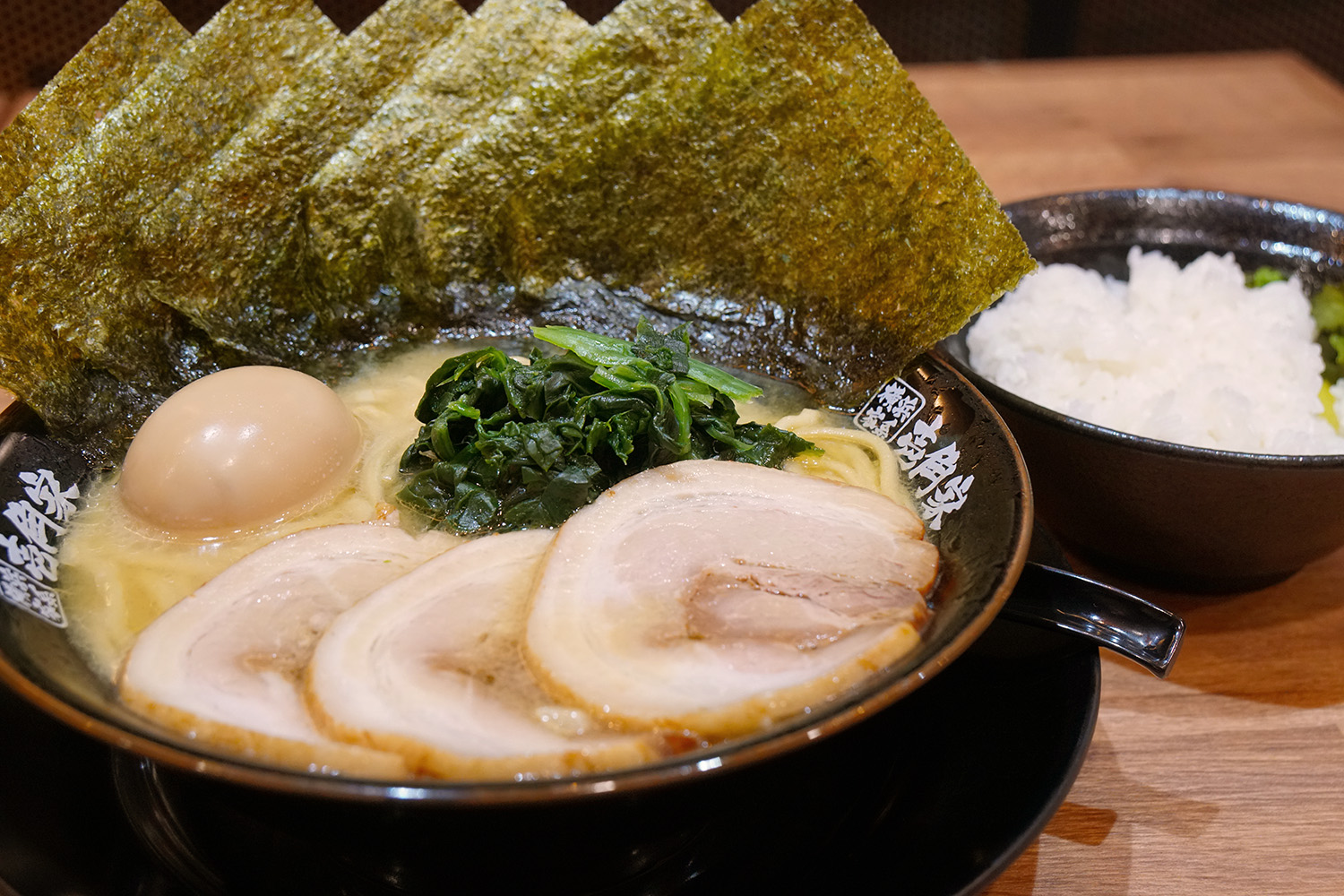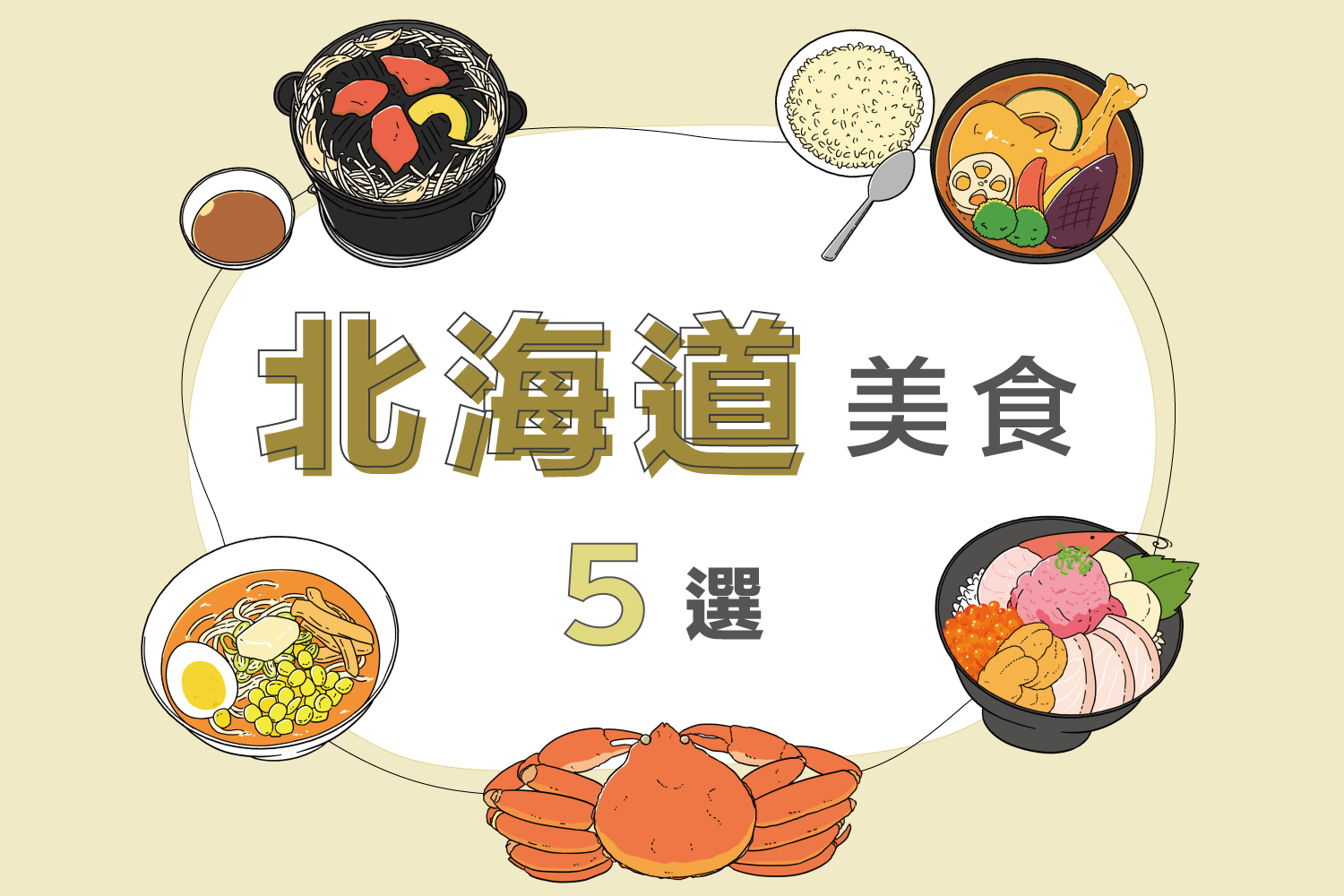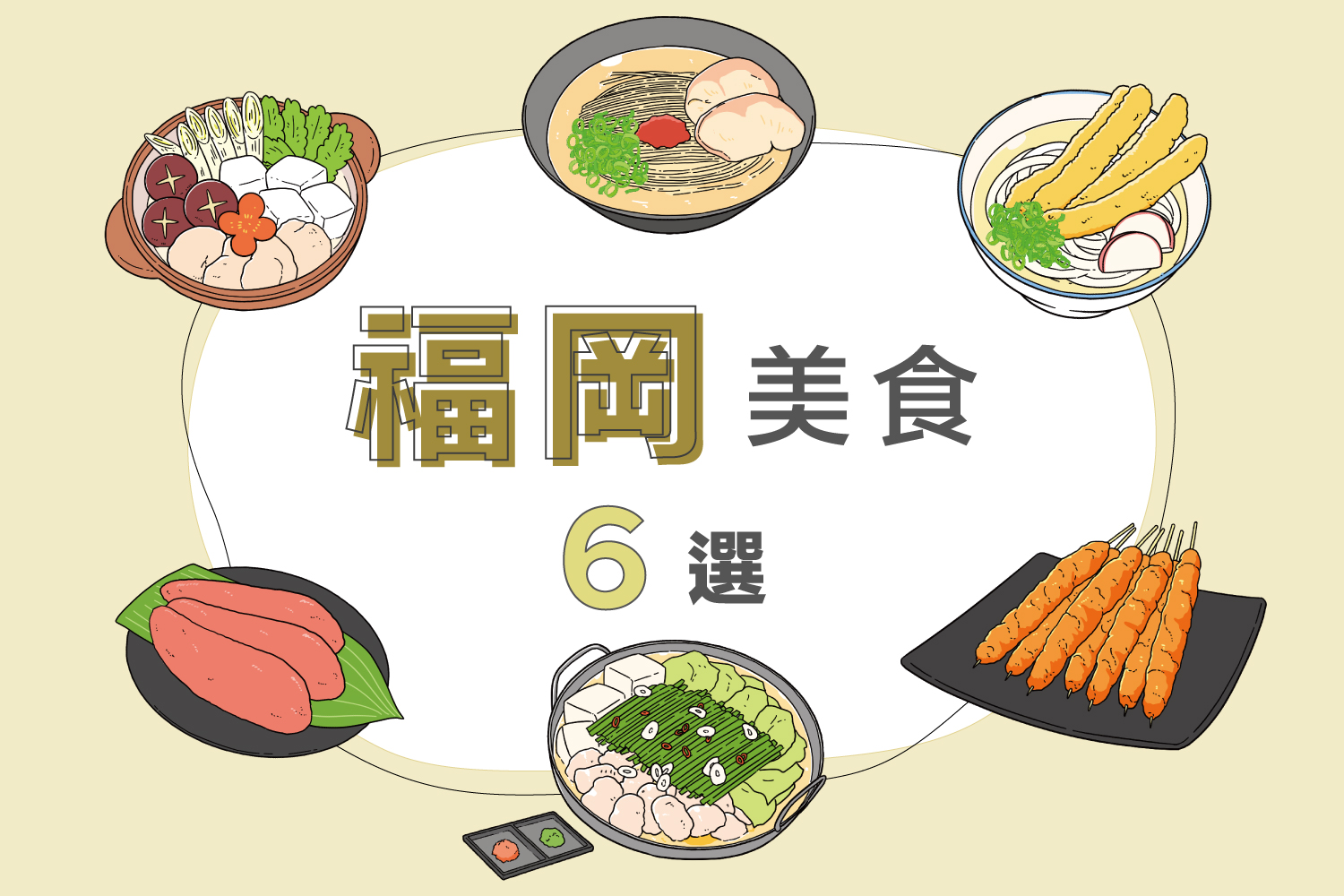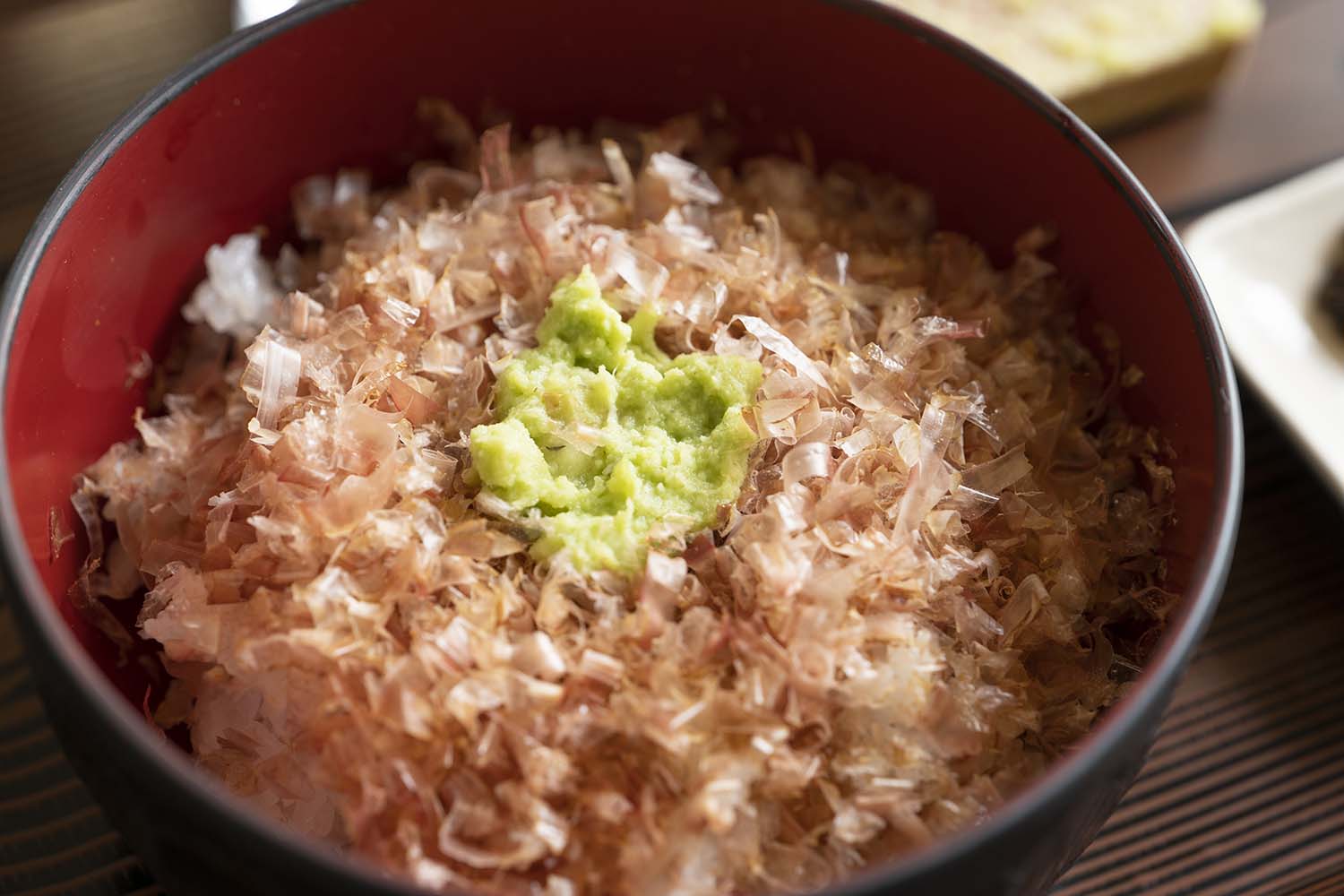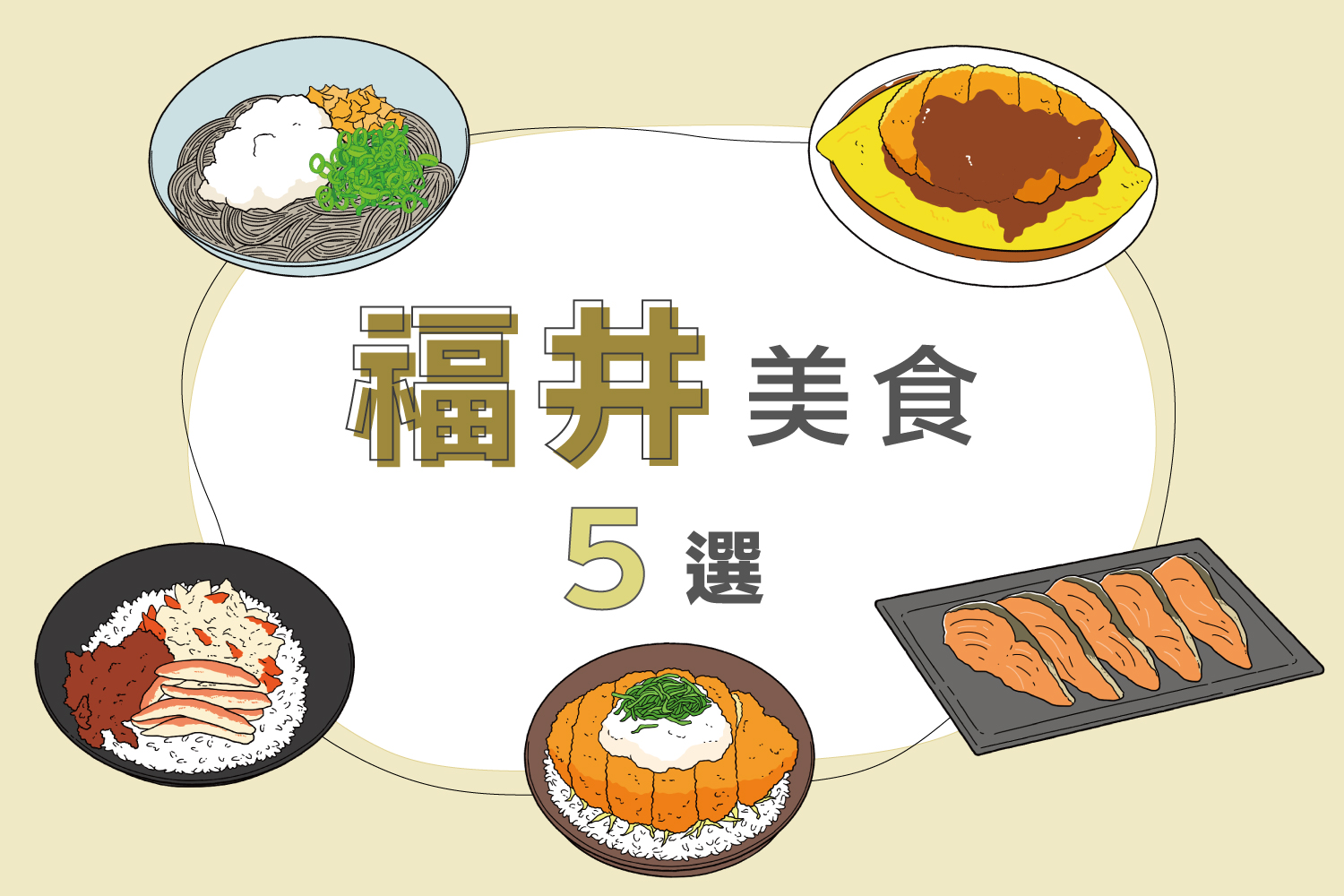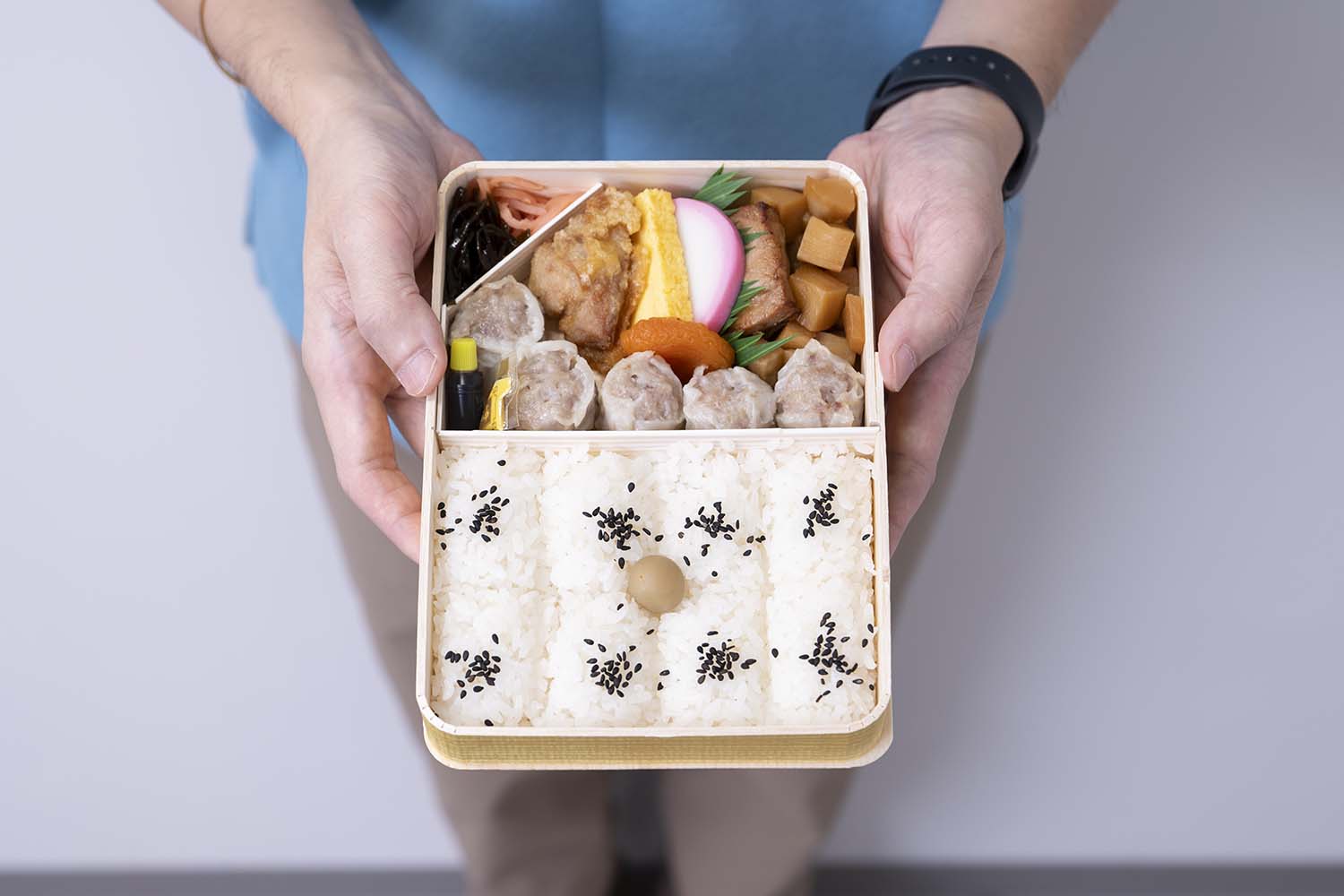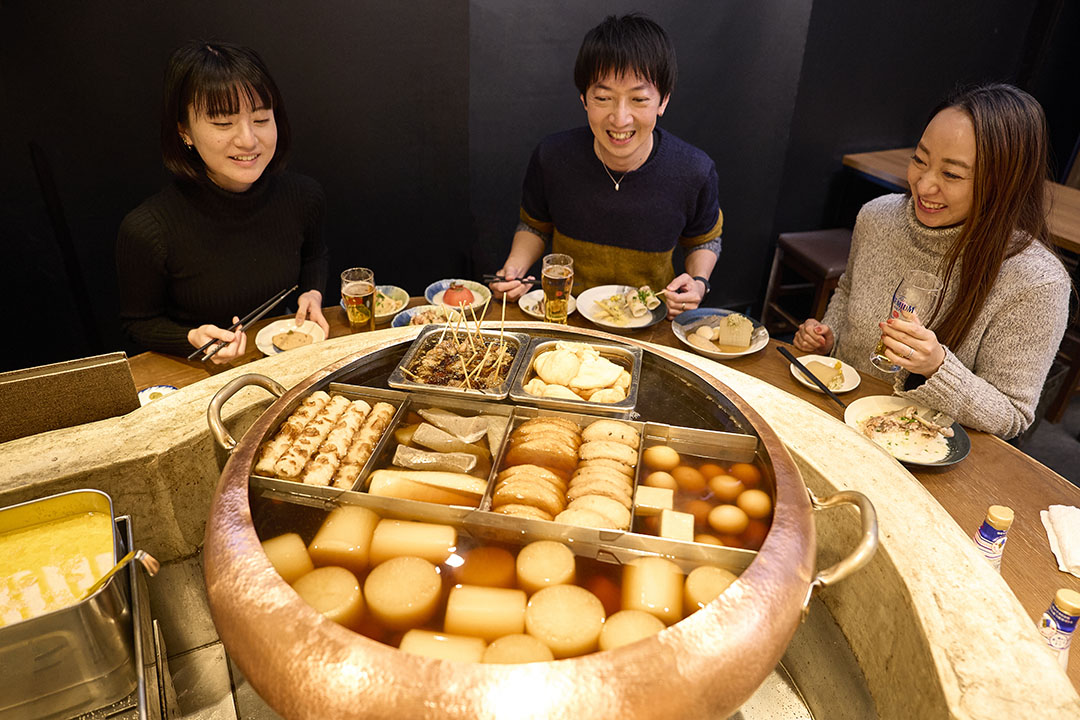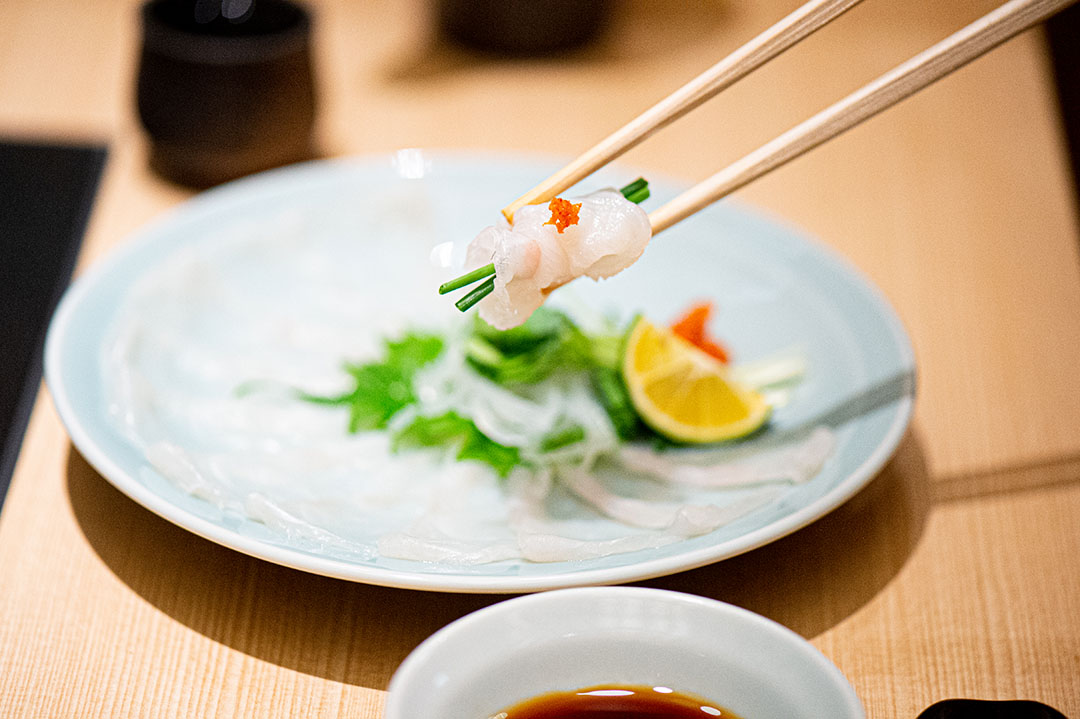
How to eat fugu (pufferfish) cuisine | Savor a full course from Tessa (fugu sashimi) to tecchiri (fugu hotpot)
Fugu (pufferfish) is a luxurious ingredient enjoyed in Japan for special occasions. There is an established order of dishes for fugu cuisine, as well as specific techniques to enjoy this remarkable delicacy. To learn the smart way to eat fugu cuisine, we visited Torafugu-tei, a restaurant renowned for its masterful dishes using domestic torafugu (tiger pufferfish) sourced directly from the point of production.
share:
Table of Contents
Learn about fugu cuisine
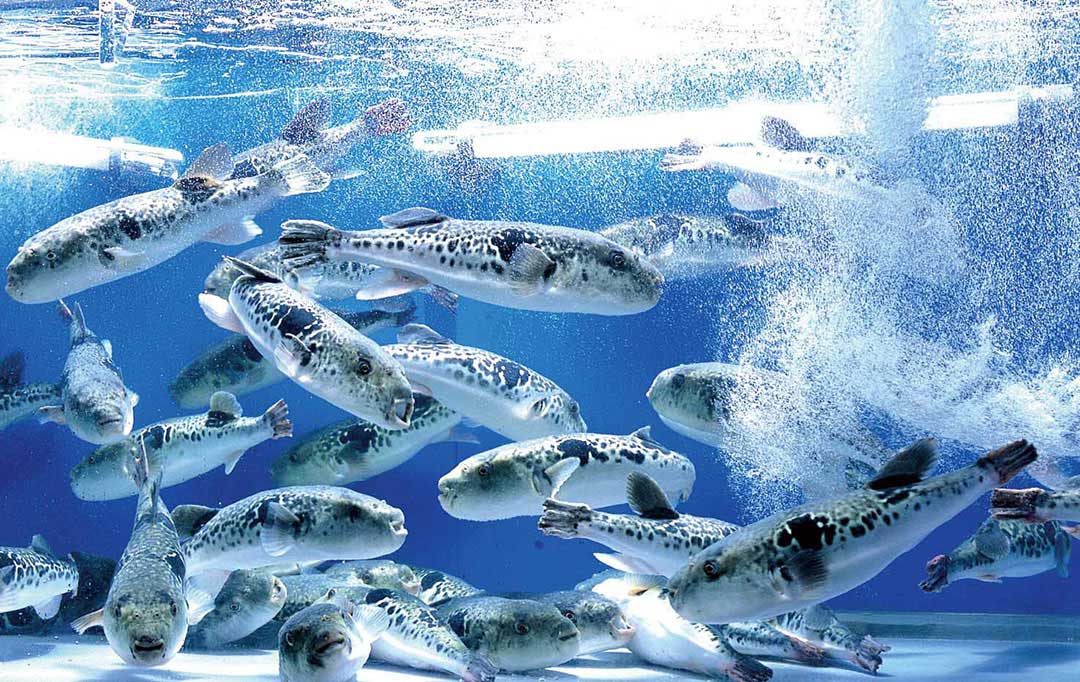
Despite the potentially dangerous toxin contained by its organs, fugu is highly sought as a luxury ingredient in Japan. Archaeological surveys have revealed that the Japanese have consumed fugu since the Jomon period, which predates 300 BCE. The consumption of fugu was forbidden by many han (domains) during the Edo period, which commenced 1603. However, fugu was still eaten on a daily basis in the foremost producing regions such as Shimonoseki, Yamaguchi Prefecture.
Later, as Japan entered the Meiji period (which commenced 1868), the sale of raw fugu was prohibited throughout the nation. However, in 1888, during the later years of the Meiji period, the prohibition against fugu consumption was lifted, and following the Second World War, the custom of enjoying fugu spread from western Japan to the entire nation.

The two best-known dishes of fugu cuisine are tecchiri (fugu hotpot) and tessa (fugu sashimi). The character “tetsu” is derived from “teppo”, which means “pistol”, and has long been used to mean fugu in the vernacular of western Japan, in reference to the pufferfish’s potentially deadly nature.
As fugu contains toxins, it may only be prepared by specially-trained chefs who have obtained a “licensed fugu chef” qualification. At Torafugu-tei, in order to provide fugu cuisine safely and with peace of mind, each location is permanently staffed by licensed fugu chefs.
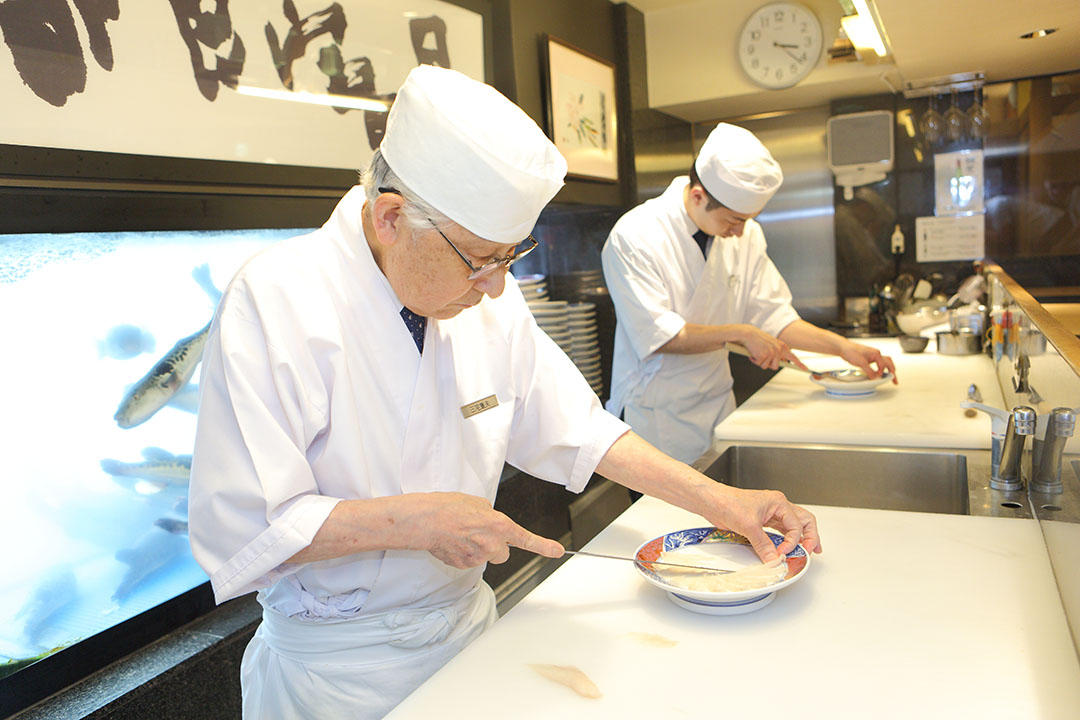
Premium domestic tiger pufferfish, raised in Hirado, Nagasaki Prefecture, are sourced and delivered live to each Tora fugu-tei location throughout the Tokyo metropolitan area. Another claim to fame are the “oyogi torafugu” (“swimming tiger pufferfish”) that energetically roam the fish tanks at the entrance to each restaurant.
Without further ado, let’s partake in a course of torafugu cuisine.
Start with kawasashi
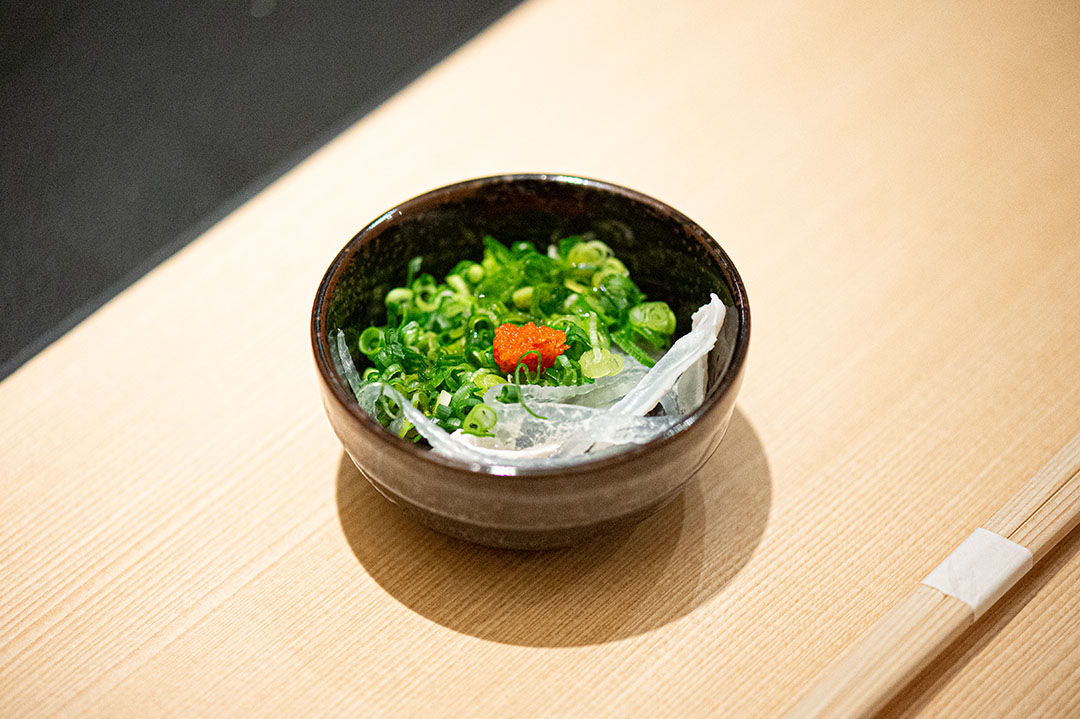
Today, we enjoyed Torafugu-tei’s most popular item, the “Oyogi Tora fugu (live tiger pufferfish) Course”. The meal begins with kawasashi, a delicate appetizer of parboiled tiger pufferfish skin sliced into thin strips.
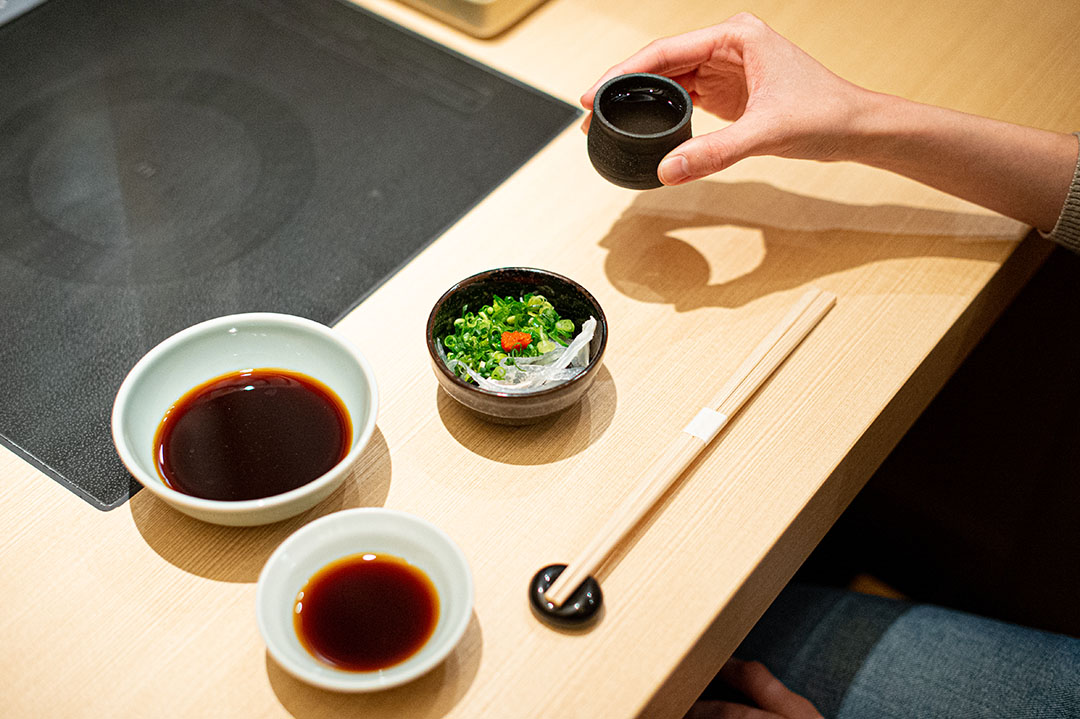
What better beverage to pair with fugu cuisine than nihonshu (sake)? Celebrated “Dassai” sake, a product of Yamaguchi Prefecture, is available from one gou (180 ml) servings.

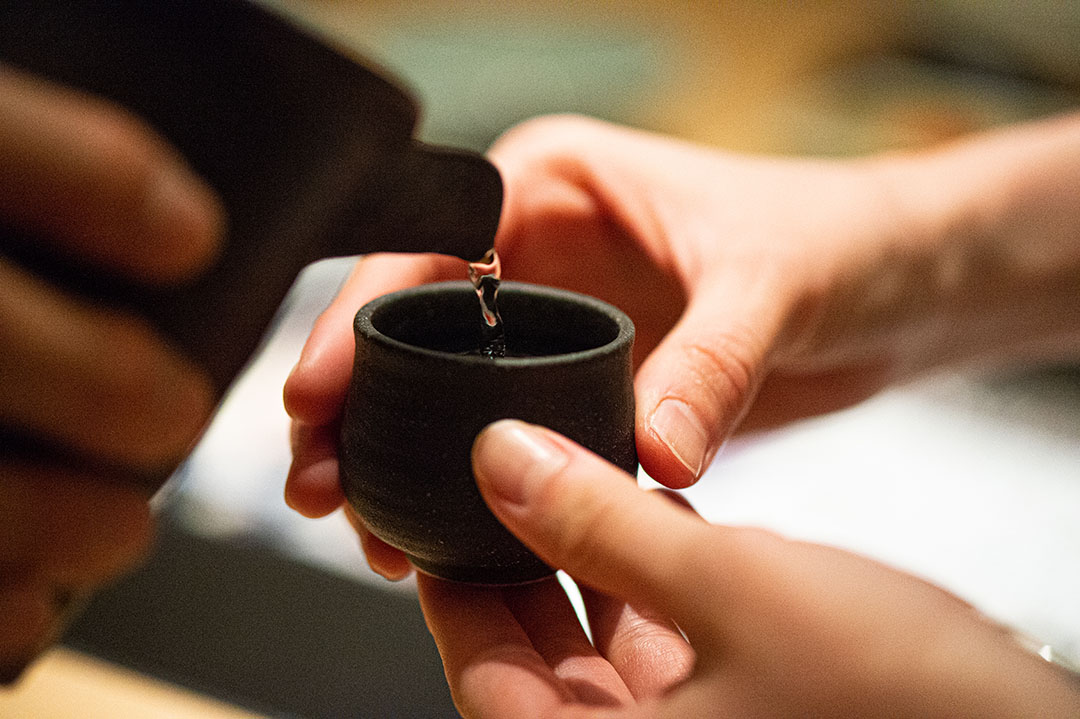
When receiving sake from the katakuchi (lipped serving vessel), etiquette dictates that you should hold your cup with both hands.
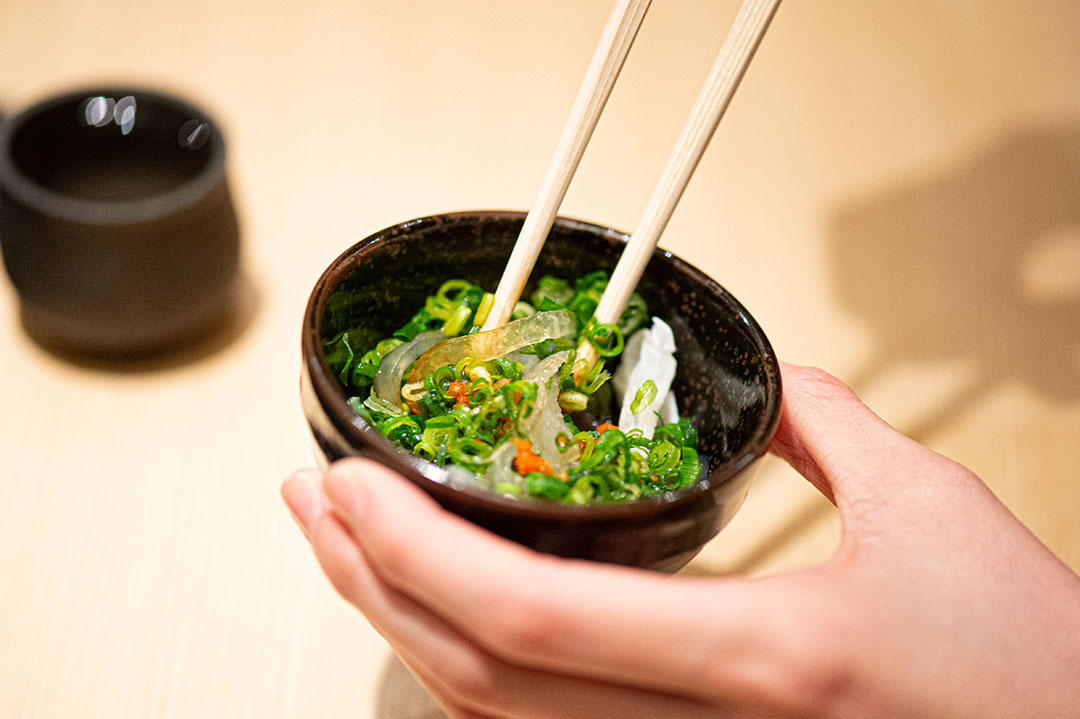

The kawasashi is served with a handmade ponzu (citrus-accented soy sauce) featuring sudachi (a small, sour citrus) from Tokushima Prefecture.
Take two or three slices in your chopsticks, and enjoy with a little of the momiji oroshi (grated daikon radish with chili) and aonegi (green spring onion) garnishes.
Move on to magnificent tessa
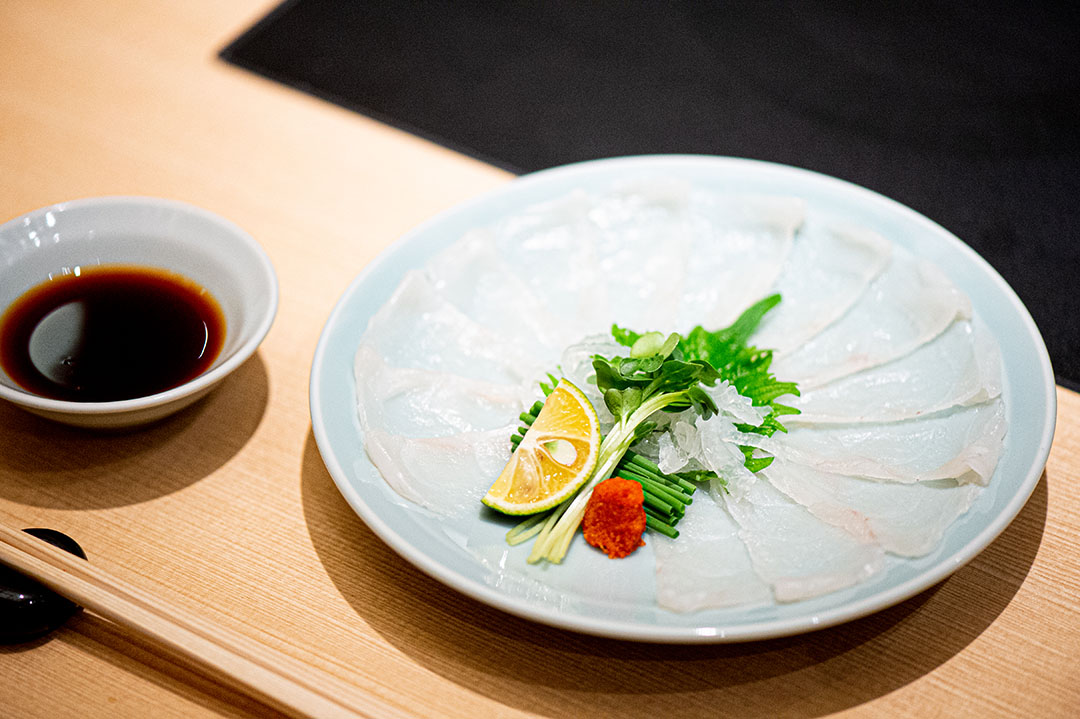
The next dish is served: tessa, sashimi of fugu prepared in delicate slices so thin that you can see through them. Once you have appreciated the masterfully beautiful plating, it’s best to enjoy this dish promptly, before the sashimi dries out. This picture shows a single serving.
商品名:泳ぎてっさ
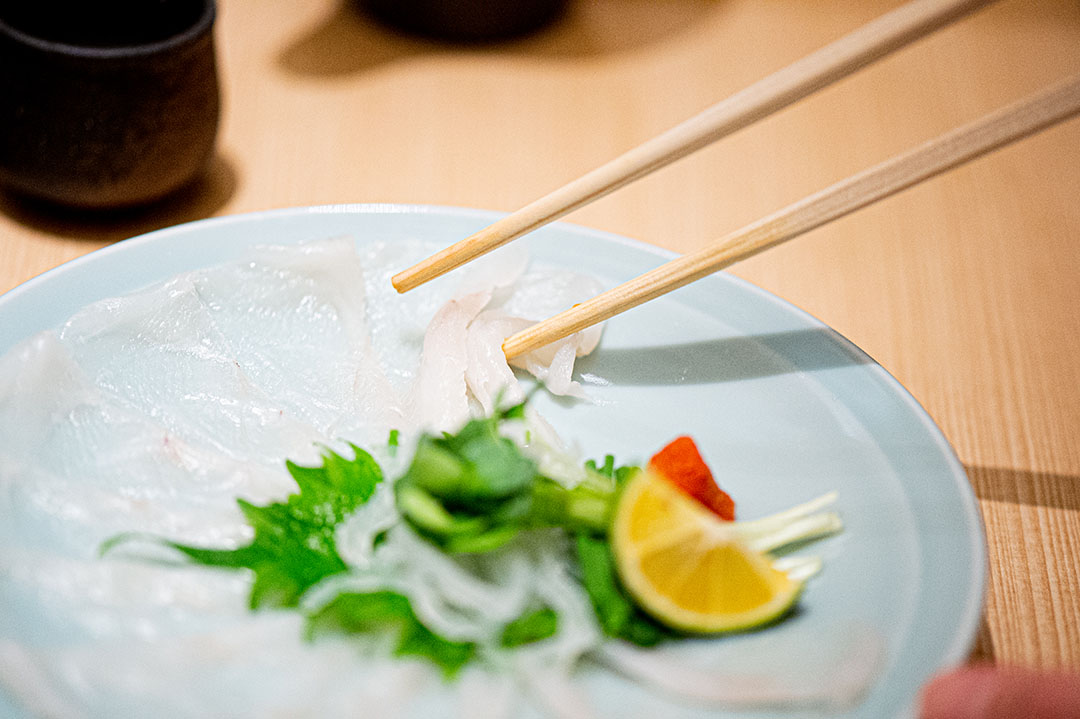
First, use your chopsticks to lift two or three fugu slices.
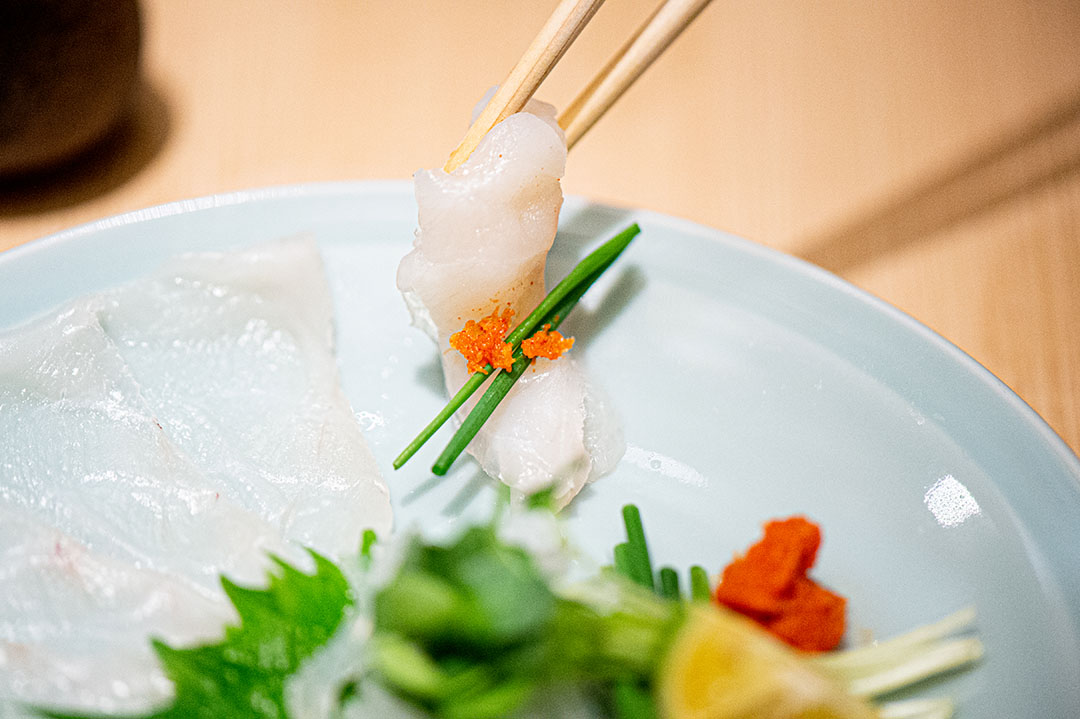

Top with the garnishes, momiji oroshi and fugu negi (a delicate green onion often paired with fugu). Wrap the slices around the garnishes, dip into ponzu, and savor the toothsome texture which evolves into an elegant sweetness – the true pleasure of tessa.

After enjoying the flavor of fugu by itself, add a squeeze of sudachi for a bright accent. When squeezing sudachi, be mindful to cover it with your other hand to avoid spraying juice onto your fellow diners.
Savor tecchiri
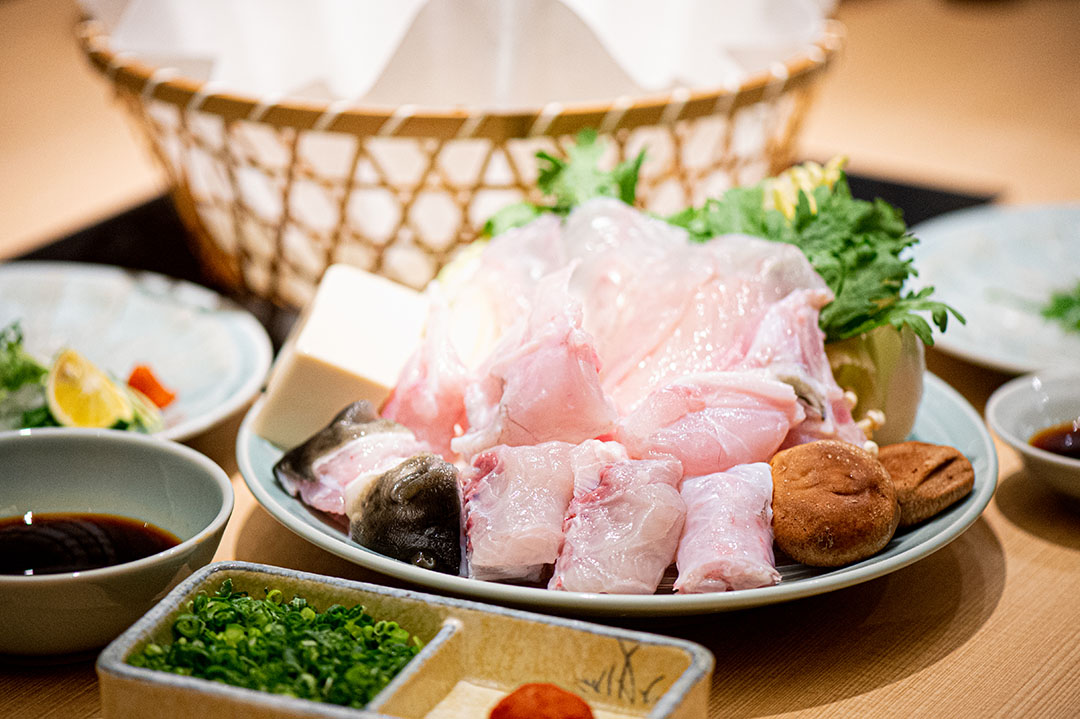
Tessa is followed by tecchiri, perhaps the second best-known preparation of fugu. The name tecchiri is composed of two parts: “tetsu”, derived from “teppo” (“pistol”), and “chiri”, meaning “hotpot”. Ingredients such as fugu slices and ara (fish head and frame), shungiku (garland chrysanthemum greens), hakusai (napa cabbage), and tofu are simmered in kombu dashi (kelp broth) and enjoyed. The freshness of the fugu can truly be appreciated, as it trembles atop your plate.
商品名:泳ぎてっちり
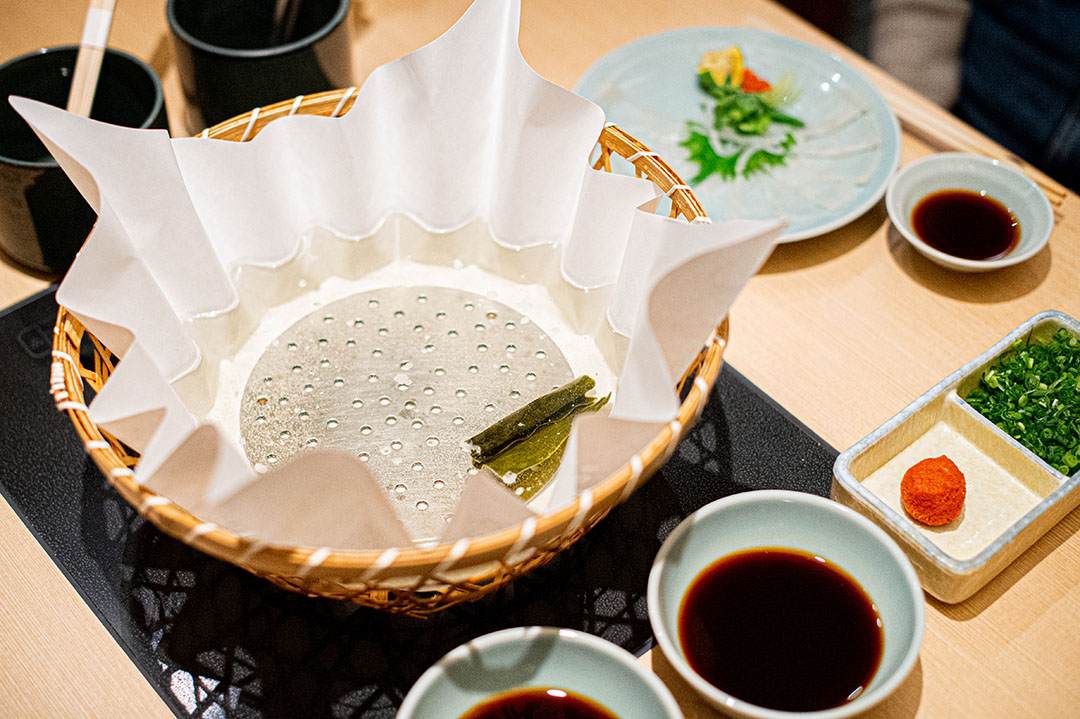
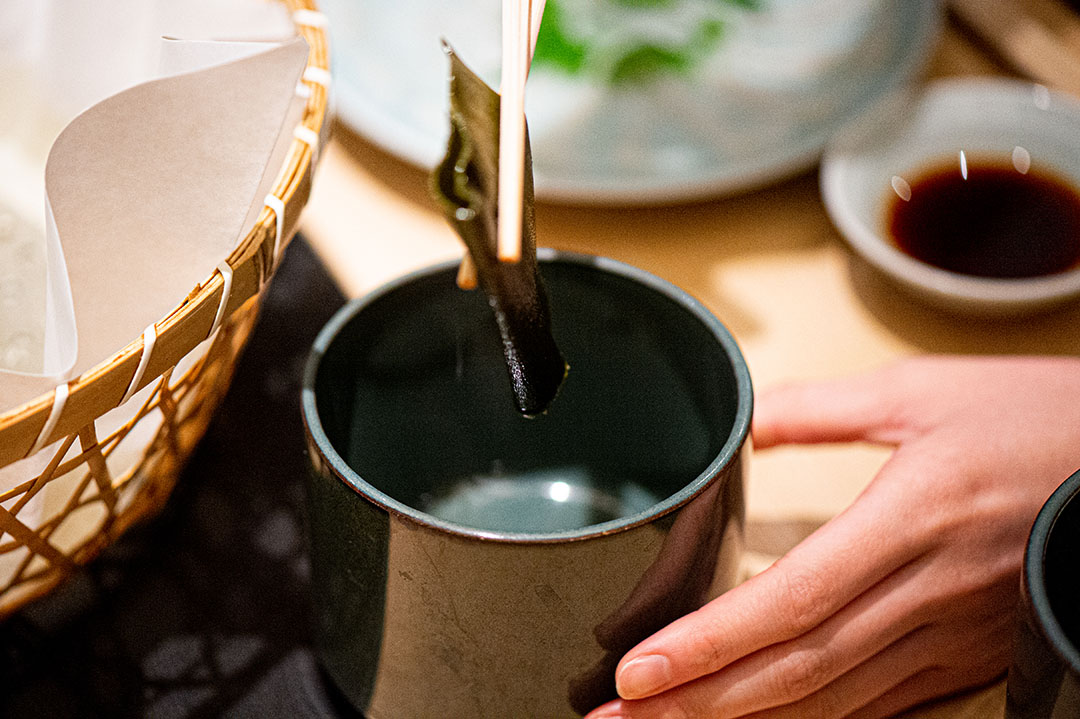
At Torafugu-tei, the tecchiri dish is presented in a paper hotpot.
Once the broth comes to the boil, remove the kelp, and place it in the disposal bowl.
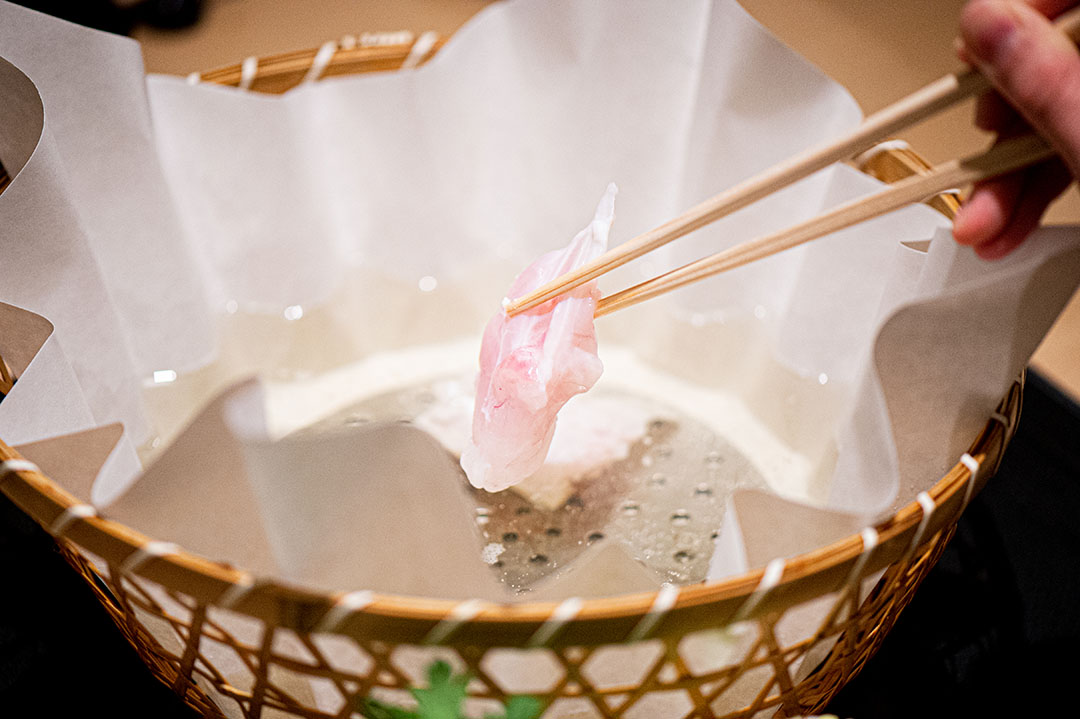

While the broth is boiling, simmer the bony pieces of fugu on medium heat for six to seven minutes. The elegant aroma of the broth will whet your appetite.
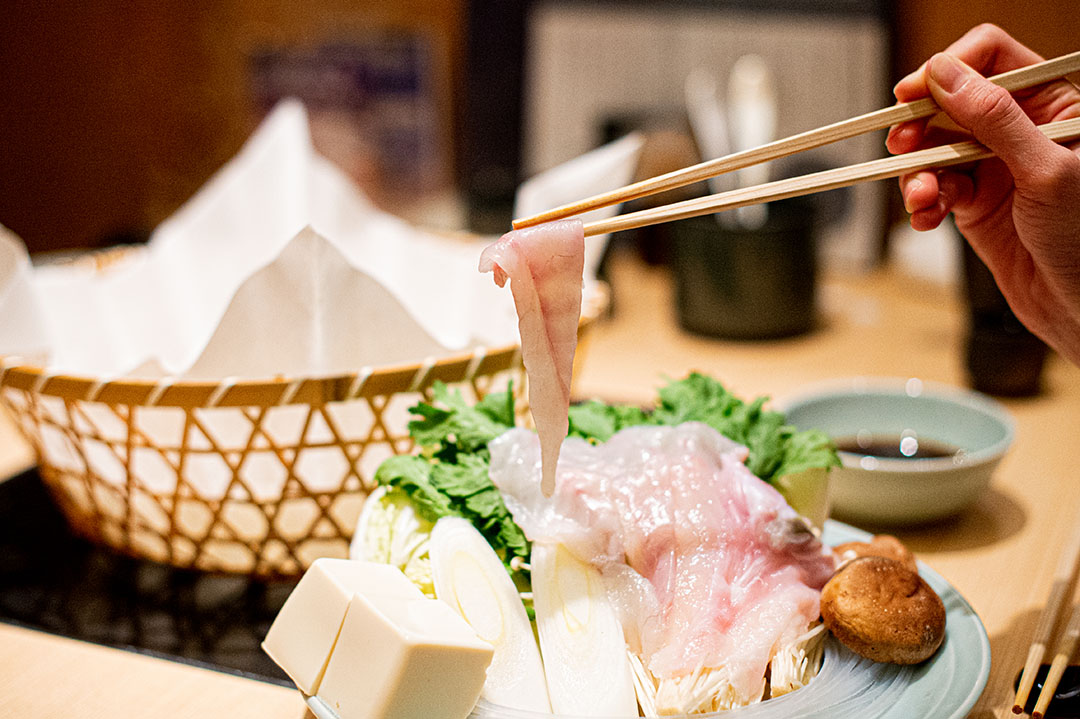
Next, cook the thinner slices for about two to three minutes.
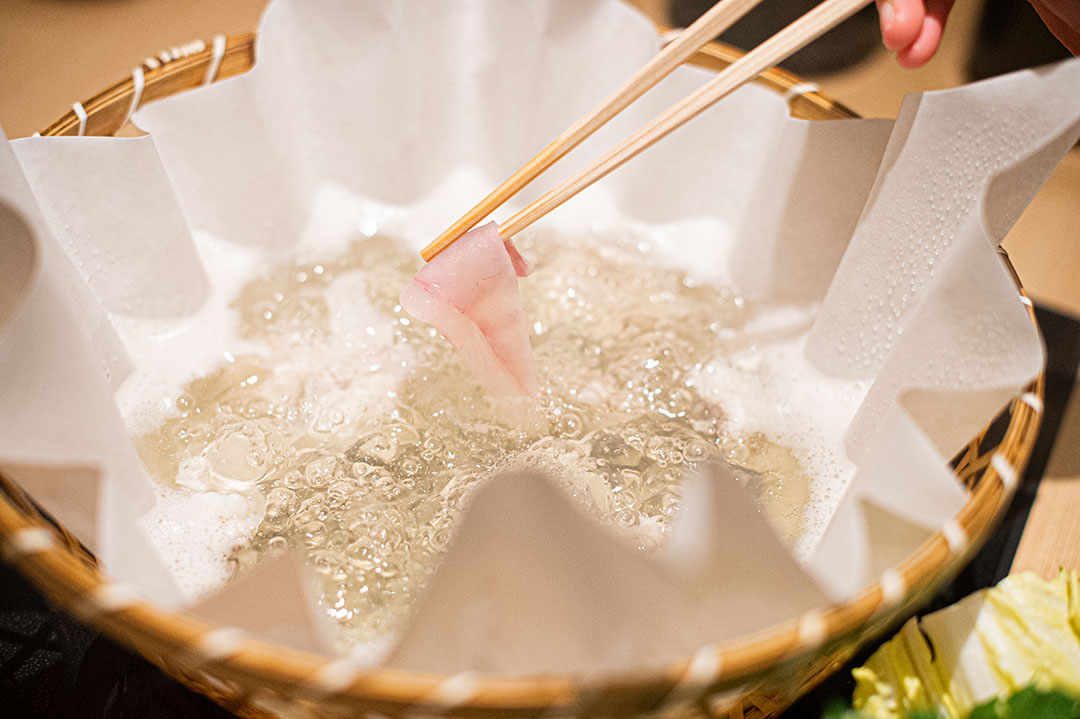
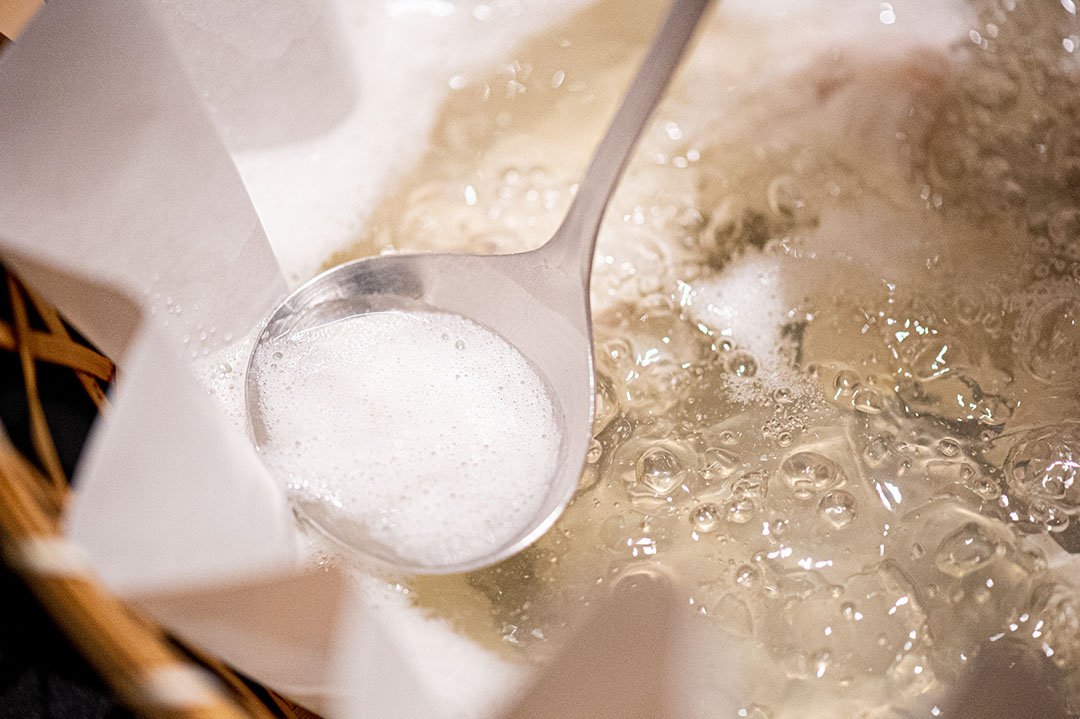
It’s crucial to not overcook the thinner slices. As needed, use the dipper to remove foam from the surface.
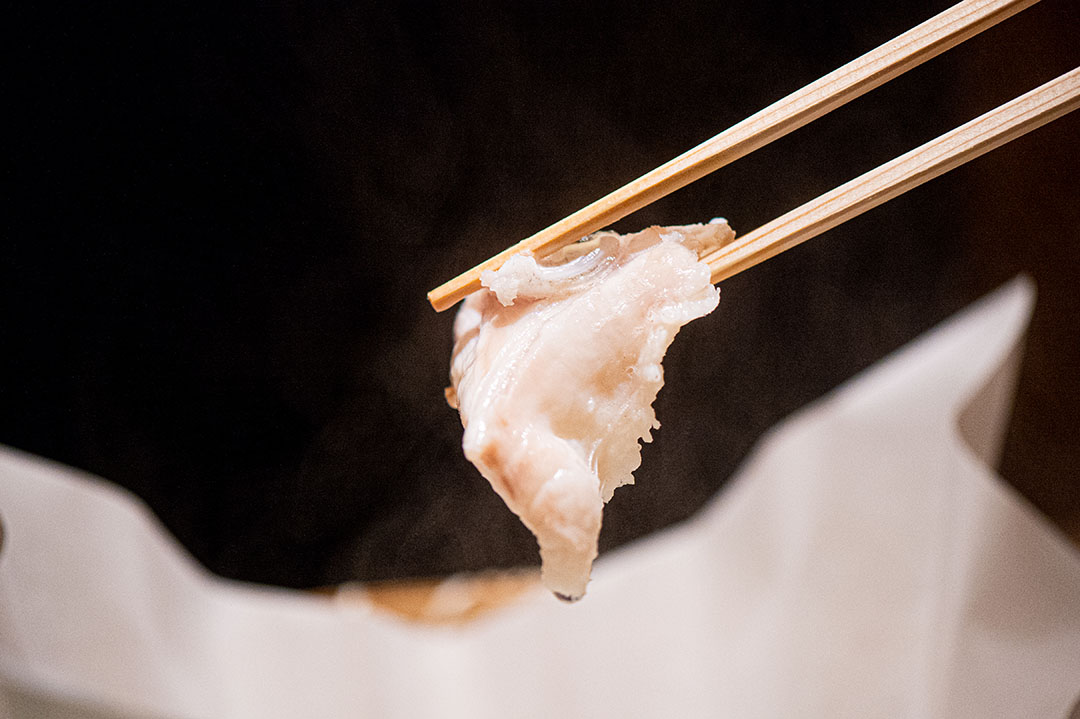
Once cooked, first, enjoy the fugu by itself.
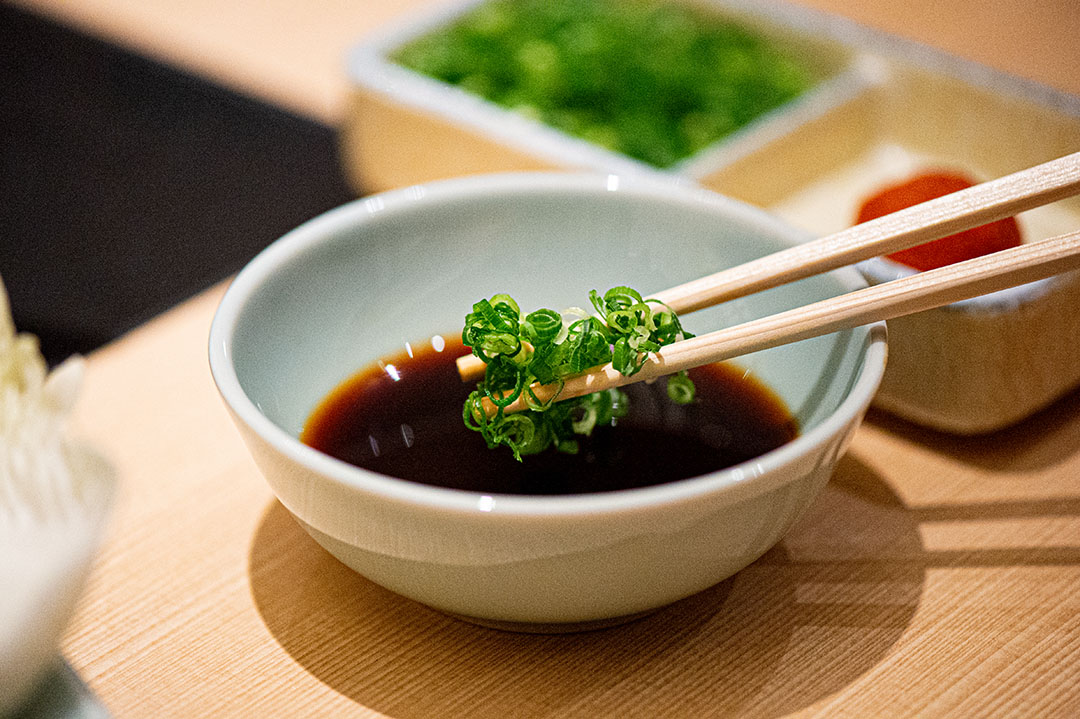
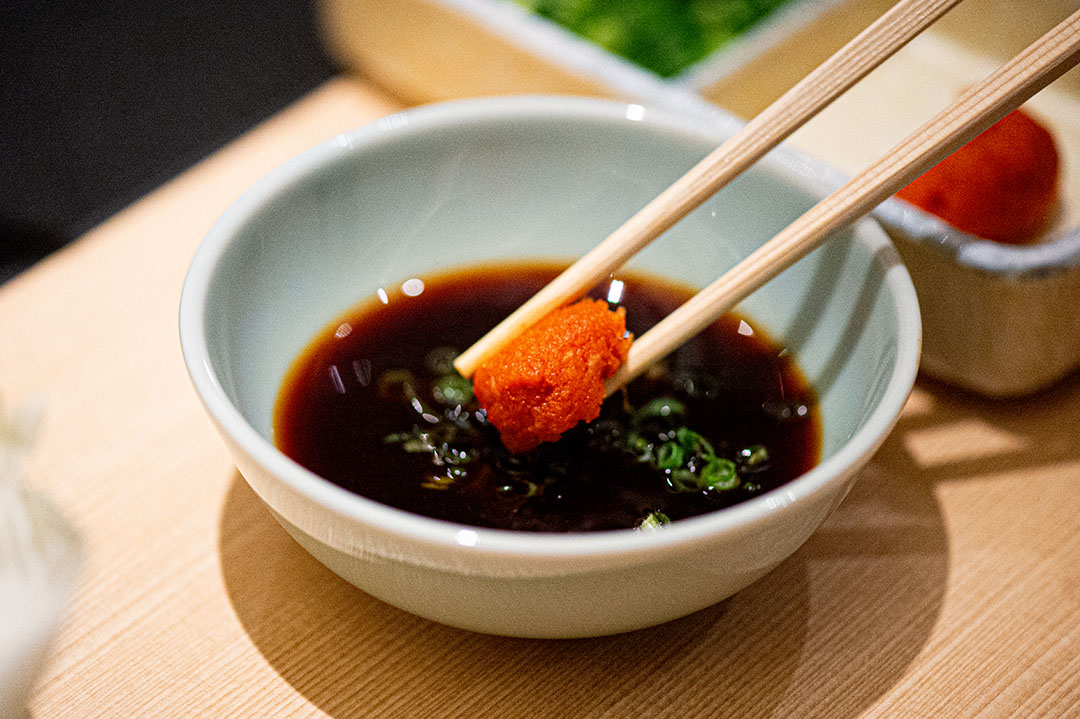
Set up your dipping bowl with ponzu, aonegi, and momiji oroshi.
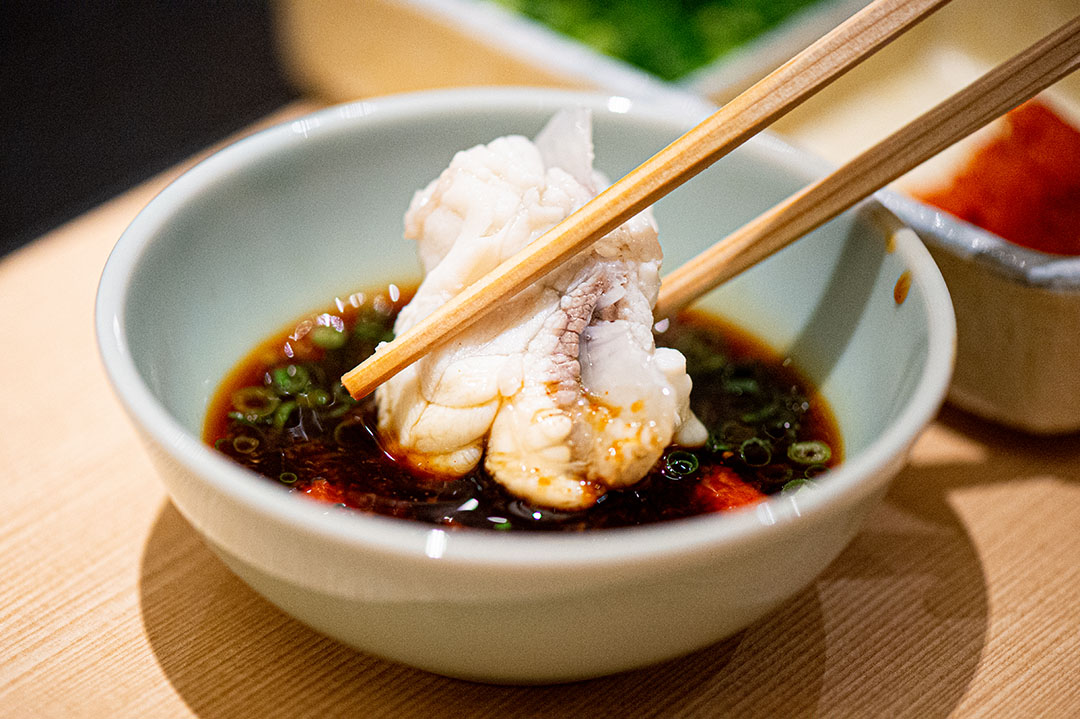
Lightly dip the fugu pieces into your ponzu and enjoy. It’s fine to take the entire piece, bones and all, into your mouth, and dispose of the bones with your fingers.
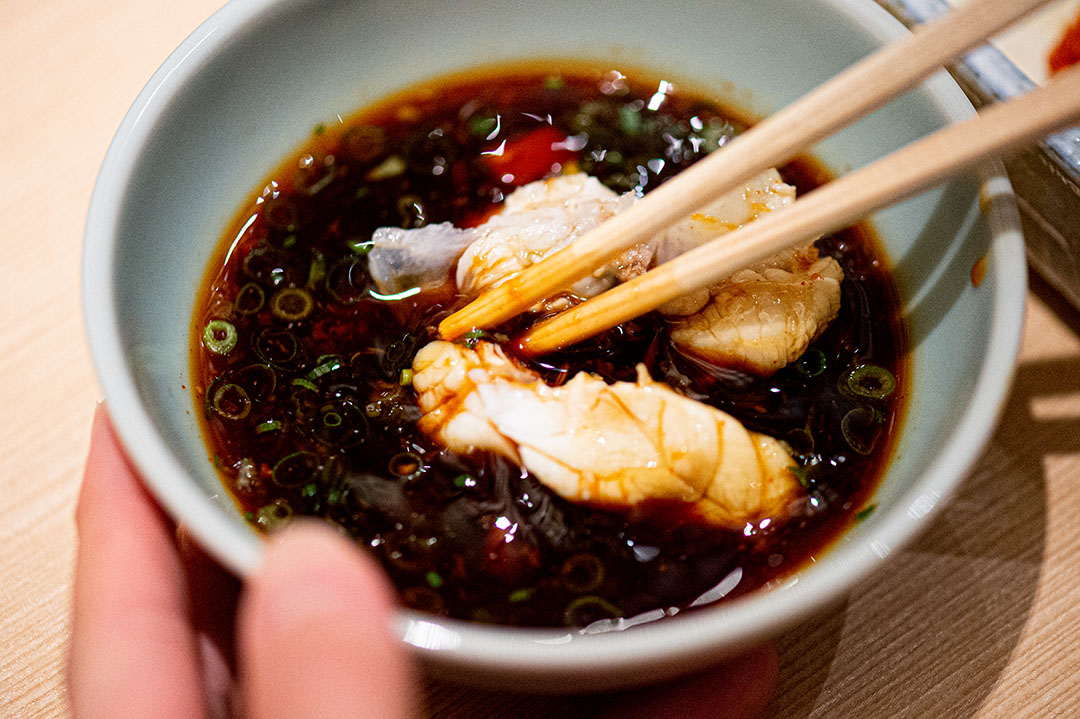
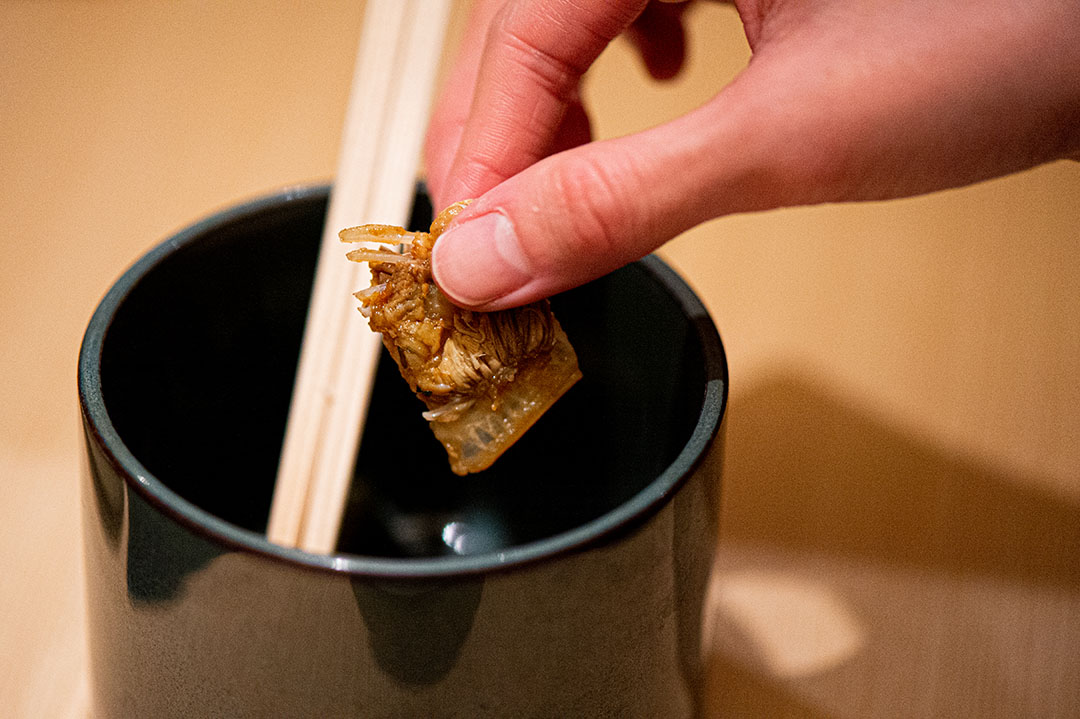
If you are confident in your chopstick skills, you may separate the bones from the meat in your dipping bowl. Place bones into the disposal bowl.
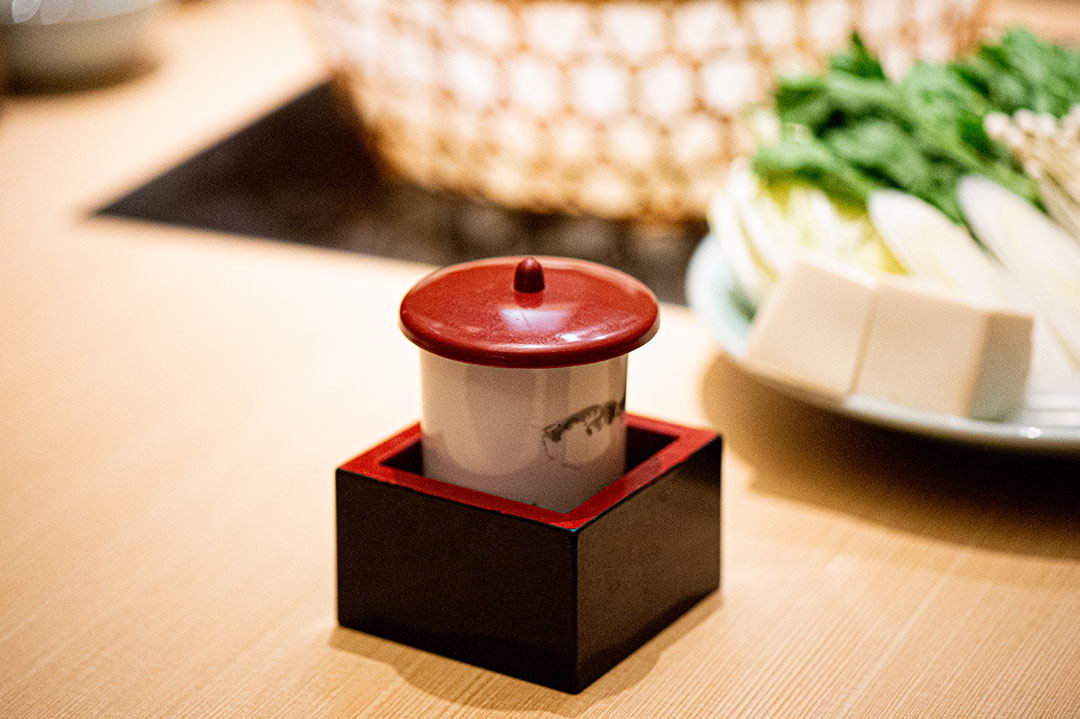
Tecchiri is superbly matched with hirezake, a drink of sake infused with fugu fins that have been roasted until they take on an amber color.
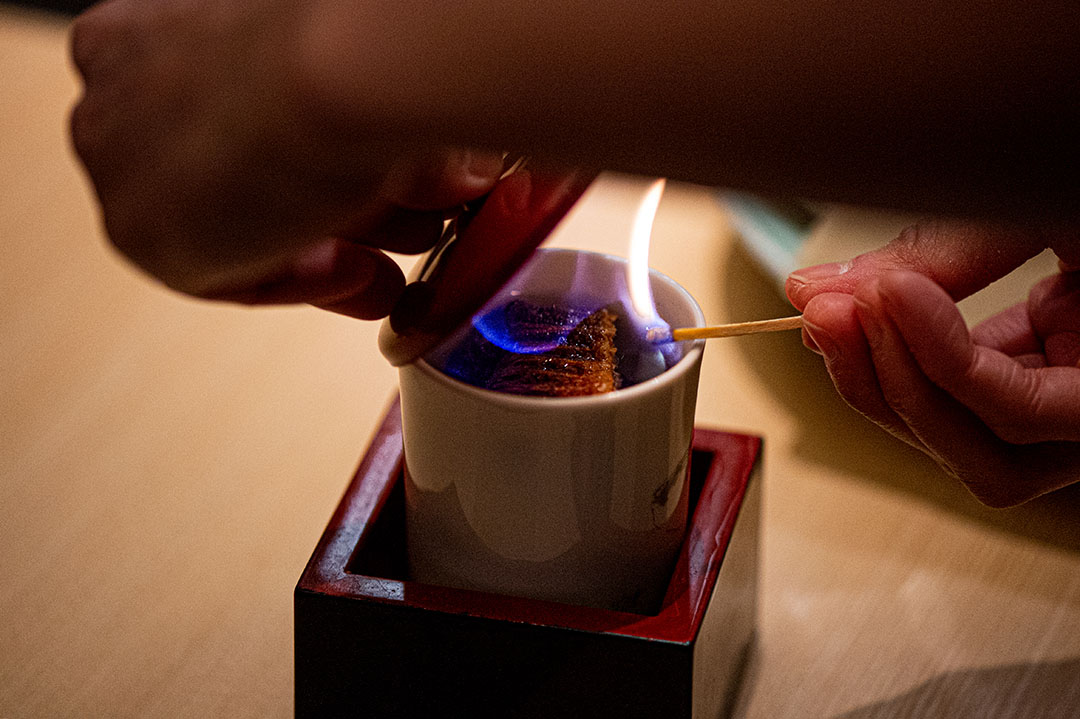
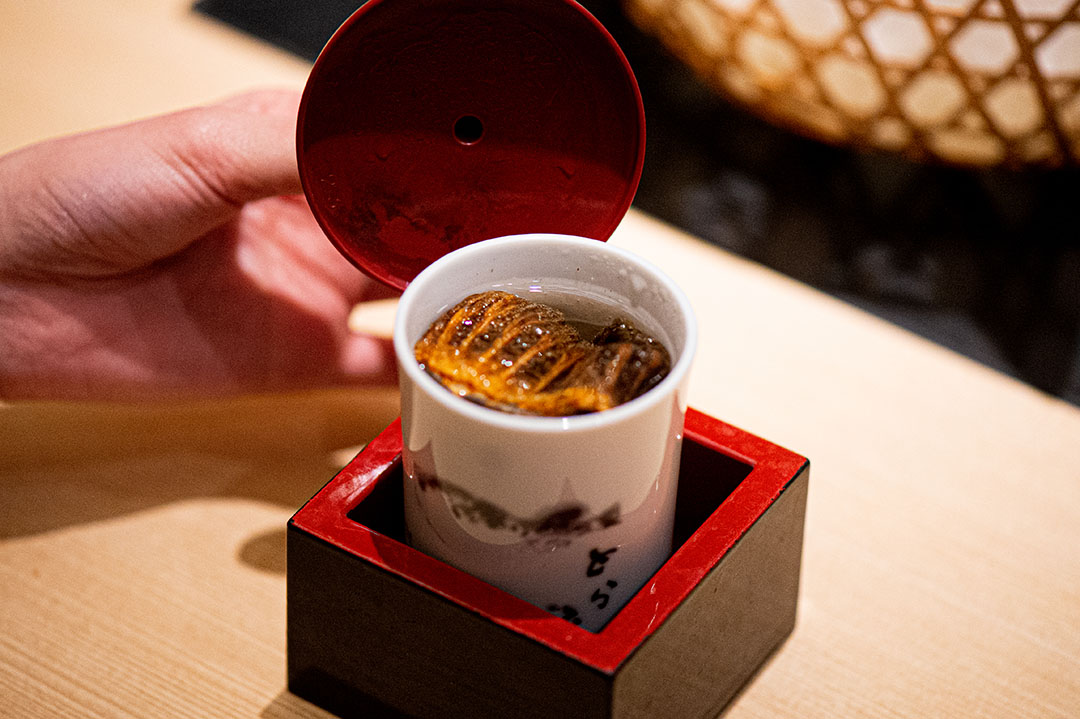
Remove the lid and bring a match flame close to the surface. A blue flame will light, spreading the unique fragrance of hirezake through the air.
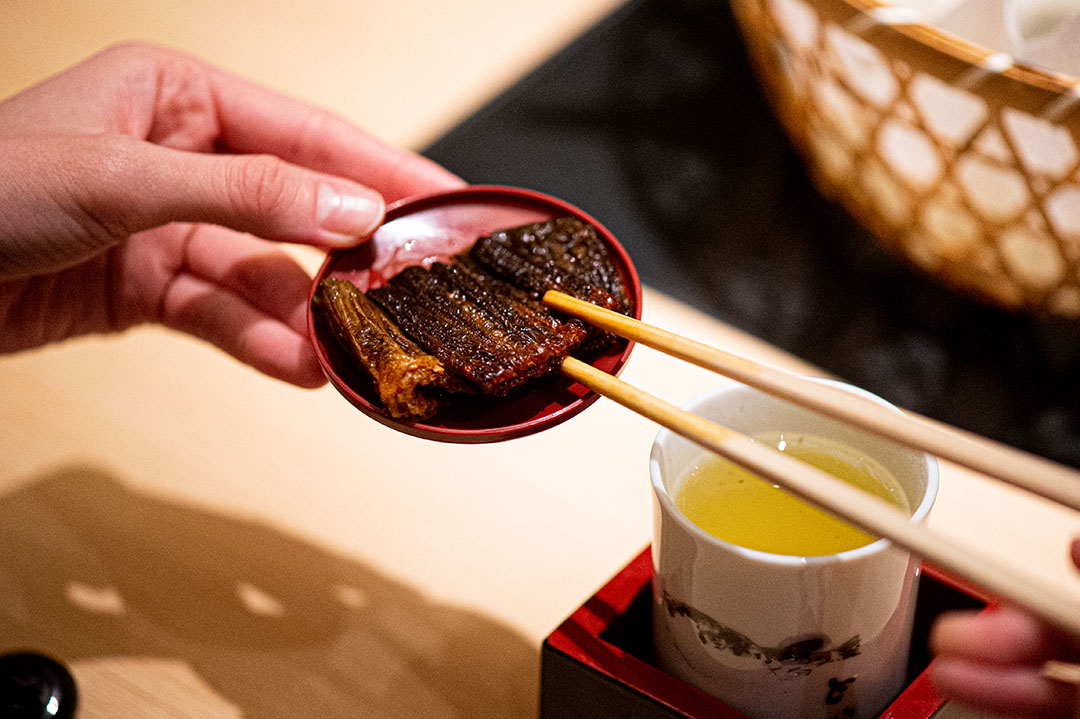
The fins are not eaten. Remove them with chopsticks and place them on the inverted lid.
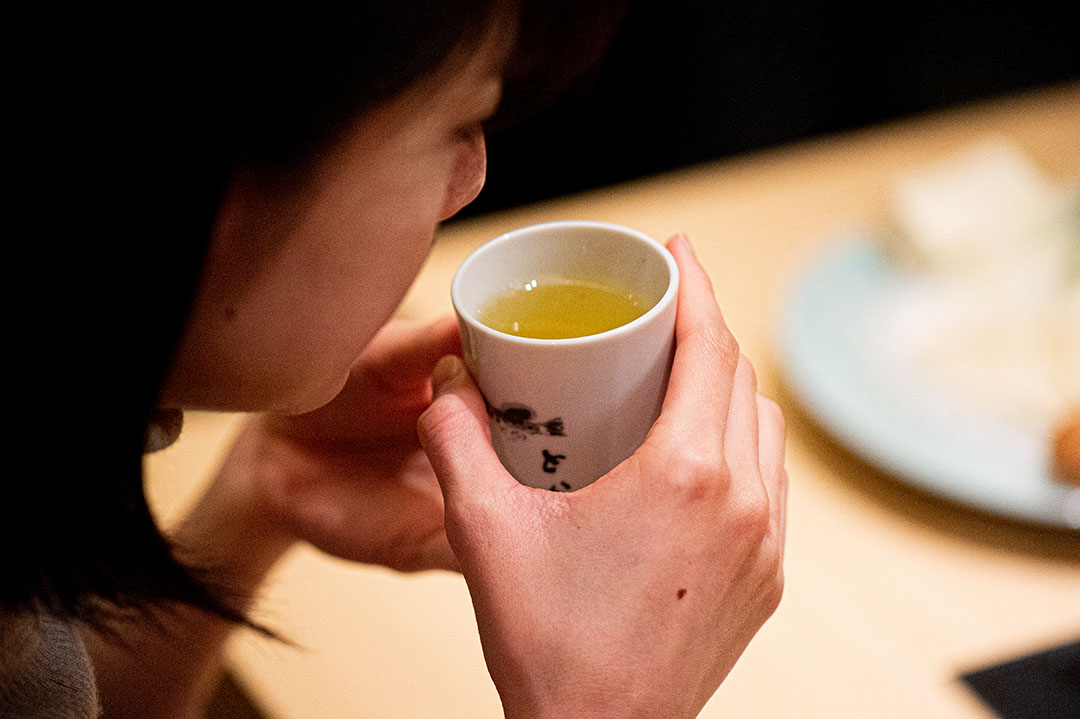
Savor the fragrance and flavor of the hirezake. When enjoying a course of fugu cuisine, many diners also order this drink with the first dish.
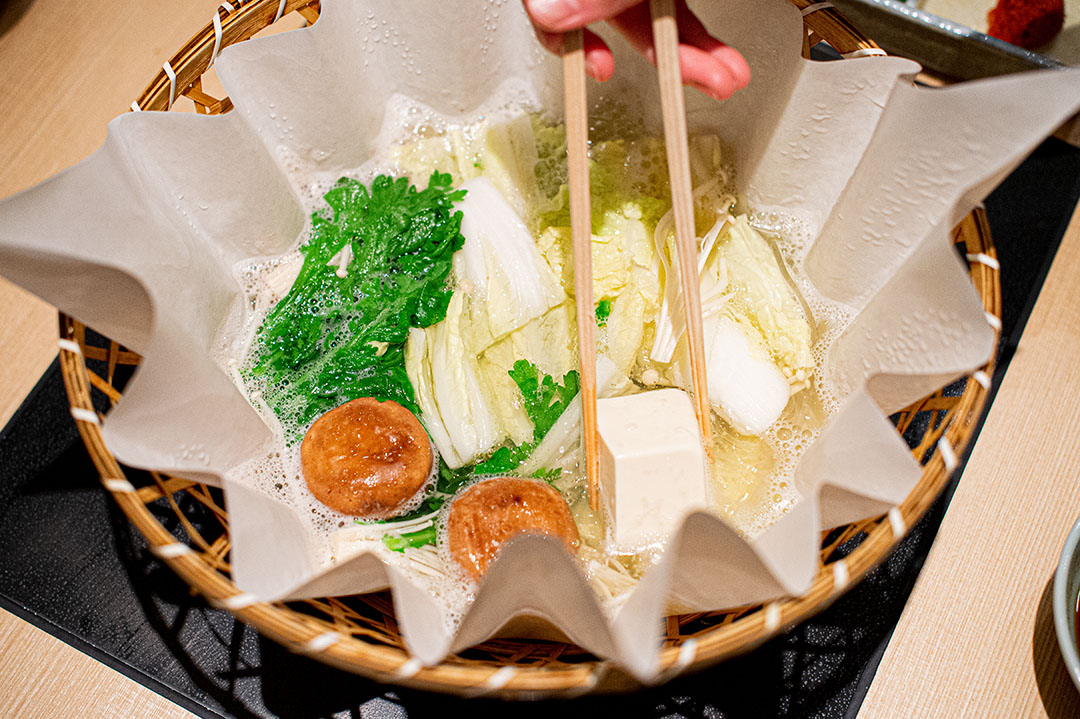
After you have feasted upon the fugu, it’s time to add the vegetables. Simmered in this fugu-infused broth, ingredients such as napa cabbage and tofu become marvelously delicious!
Nibble on fugu karaage
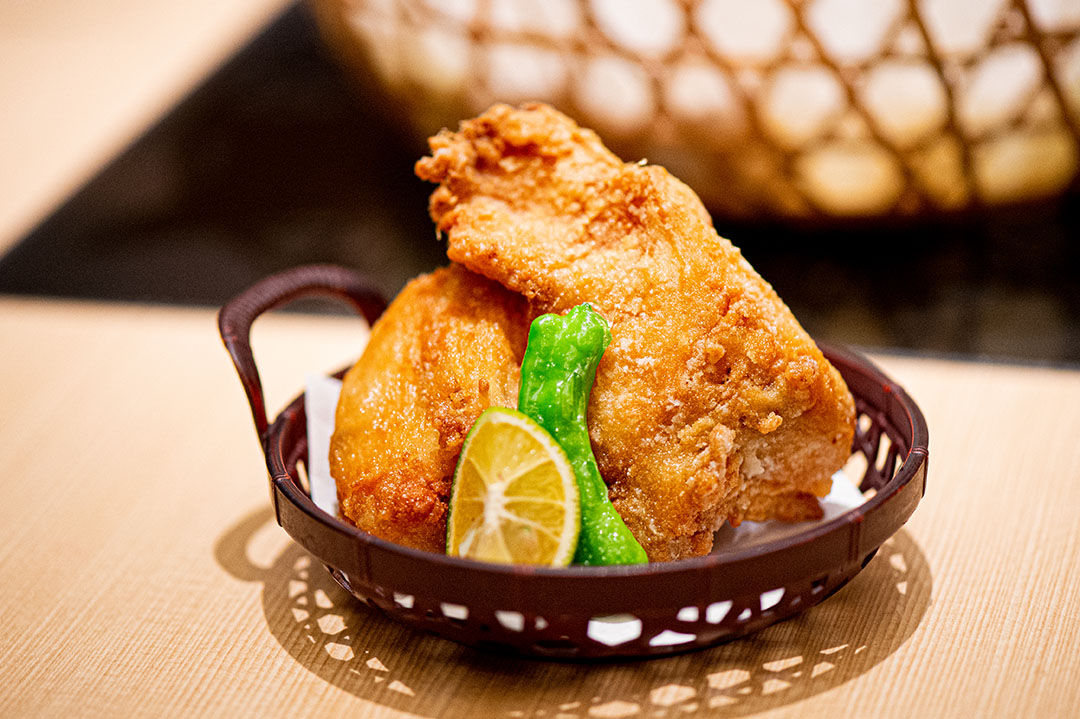
Tecchiri is followed by another house favorite, torafugu karaage (deep-fried tiger pufferfish). Each crisp bite is bursting with the fugu’s succulent umami, creating a unique combination of textures and flavors.
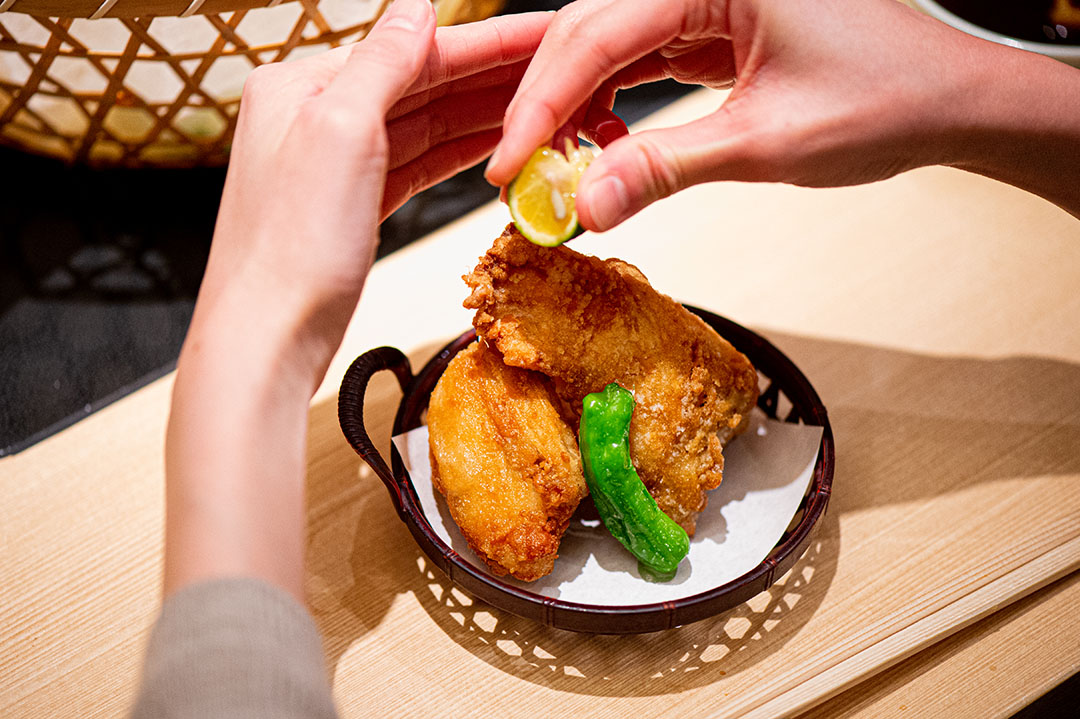
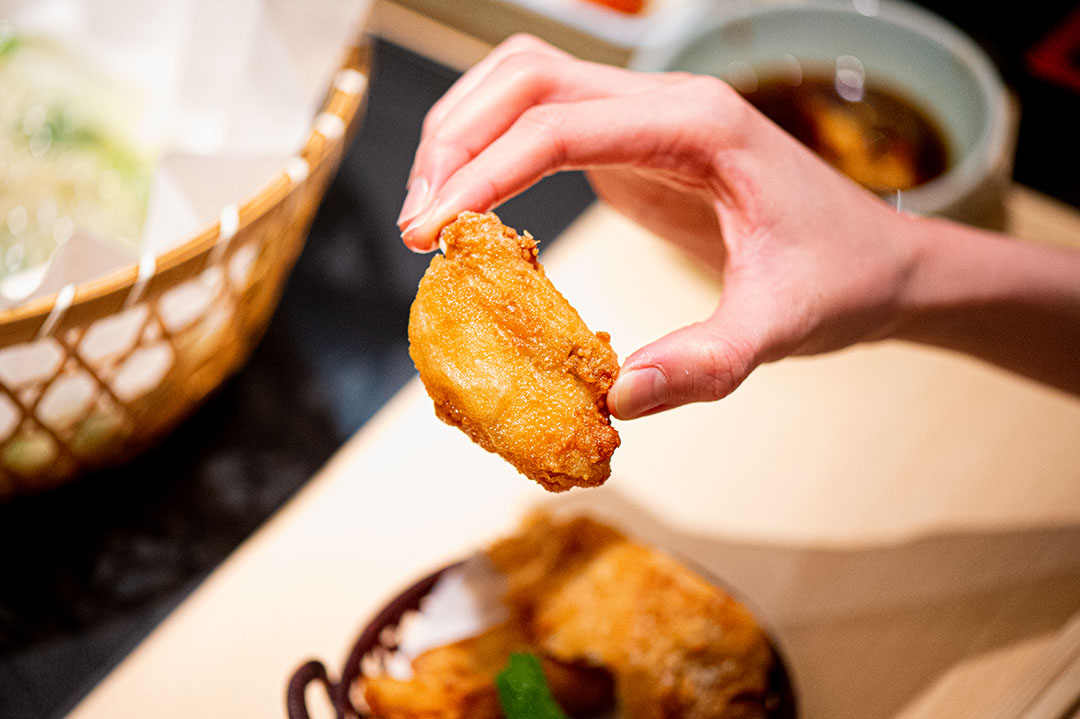
After squeezing on a little sudachi, an easy way to enjoy these tempting tidbits is to use your fingers to pick up a piece by the bone, then bite into the fleshy portion.
Finish with zosui!
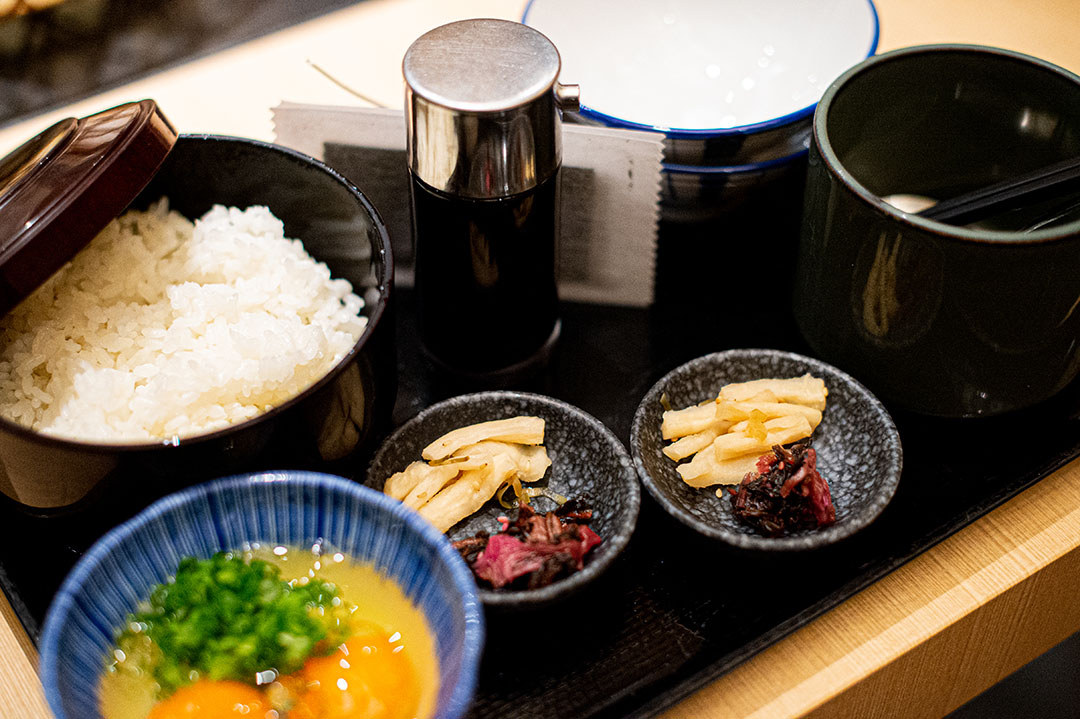
Finish the course with zosui (rice soup) using the fugu broth. Your server will prepare this for you.
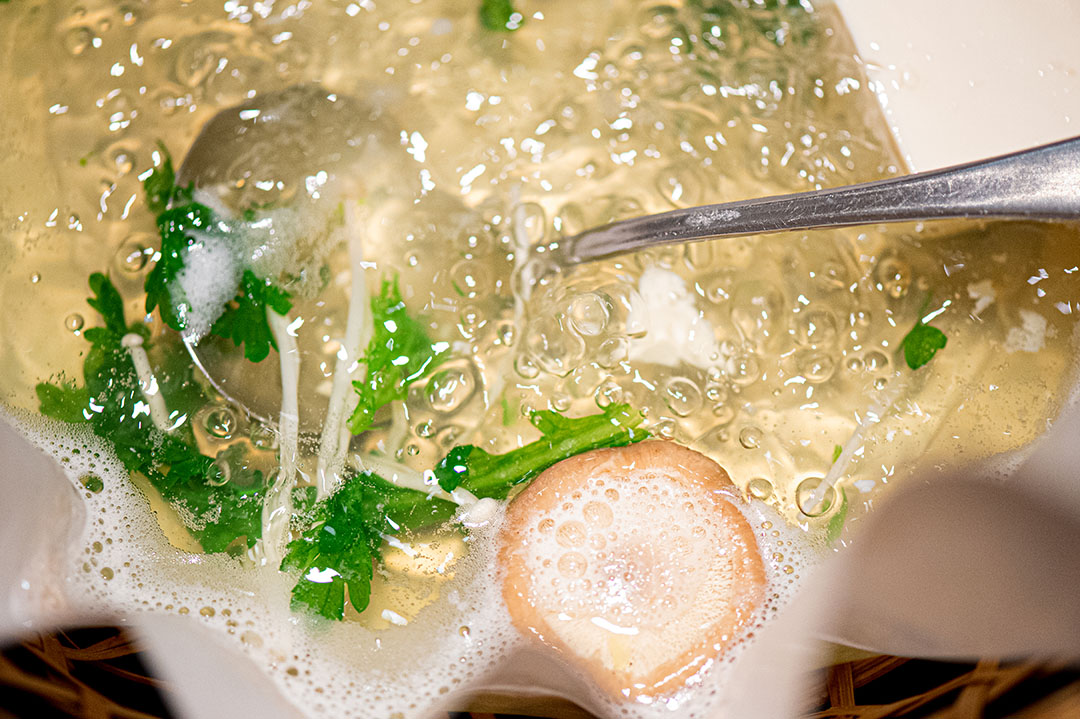
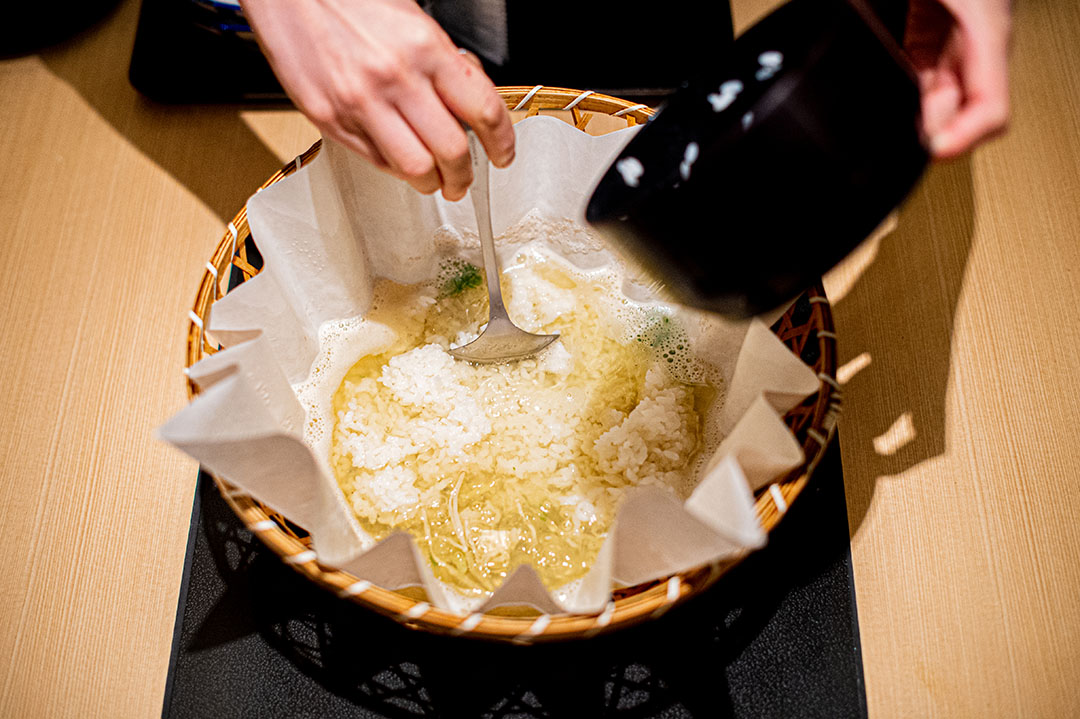
Your server will first remove any remaining vegetables from the hotpot. Once the broth comes to the boil, rice is added.
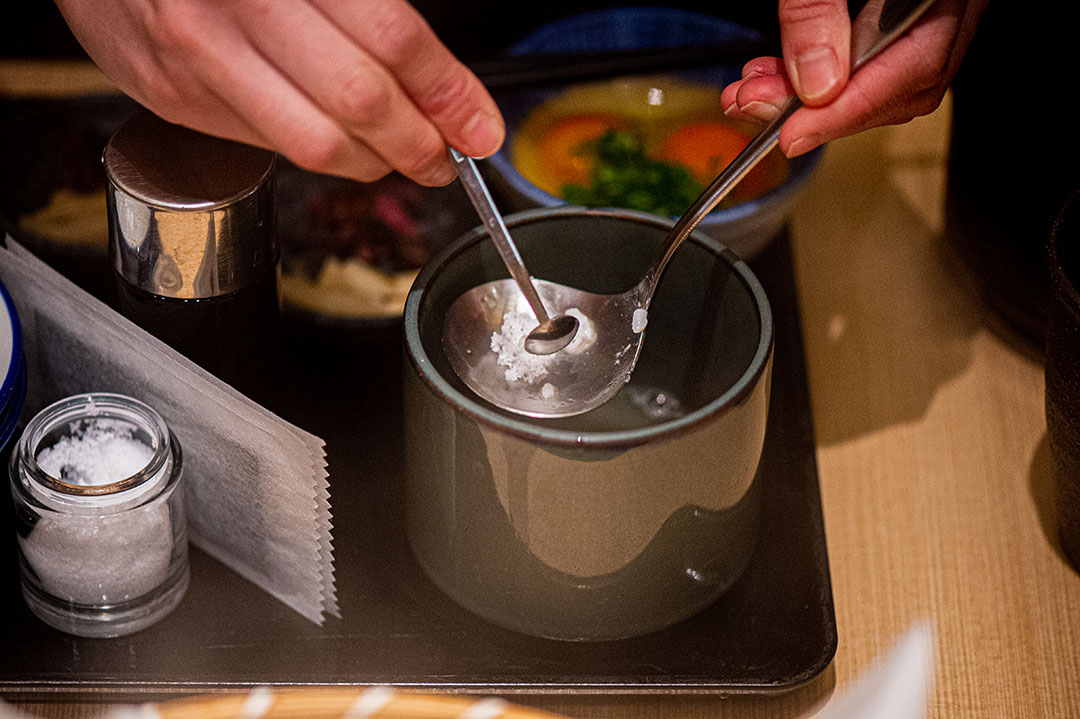
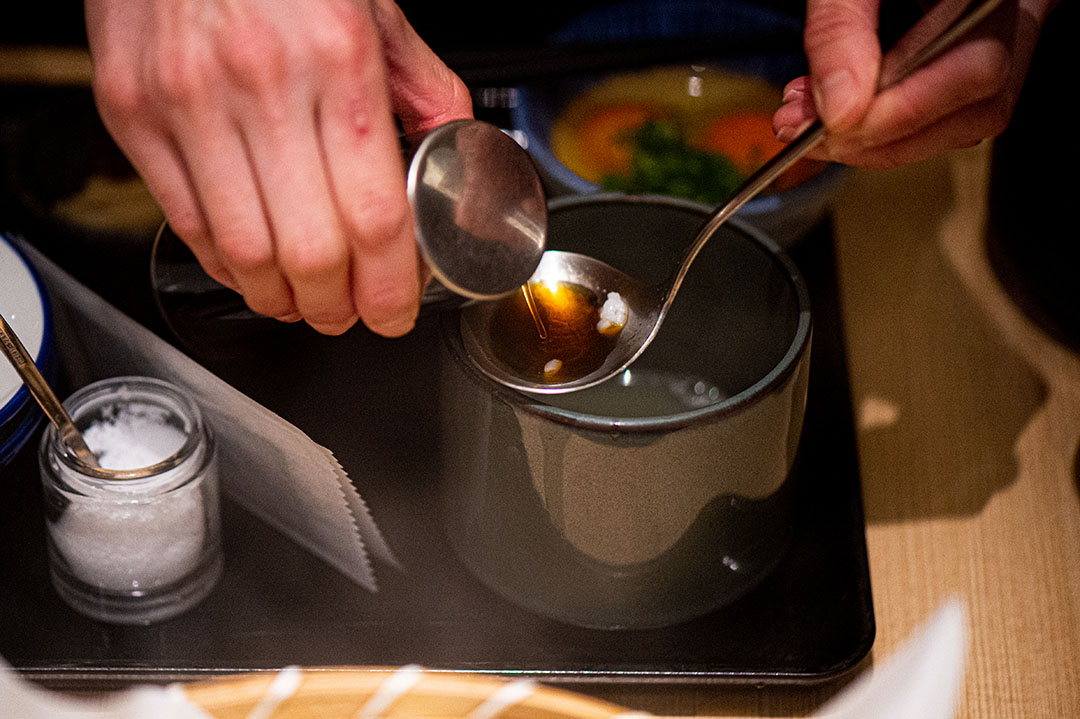
The ladle is used to season with a touch of salt and soy sauce.
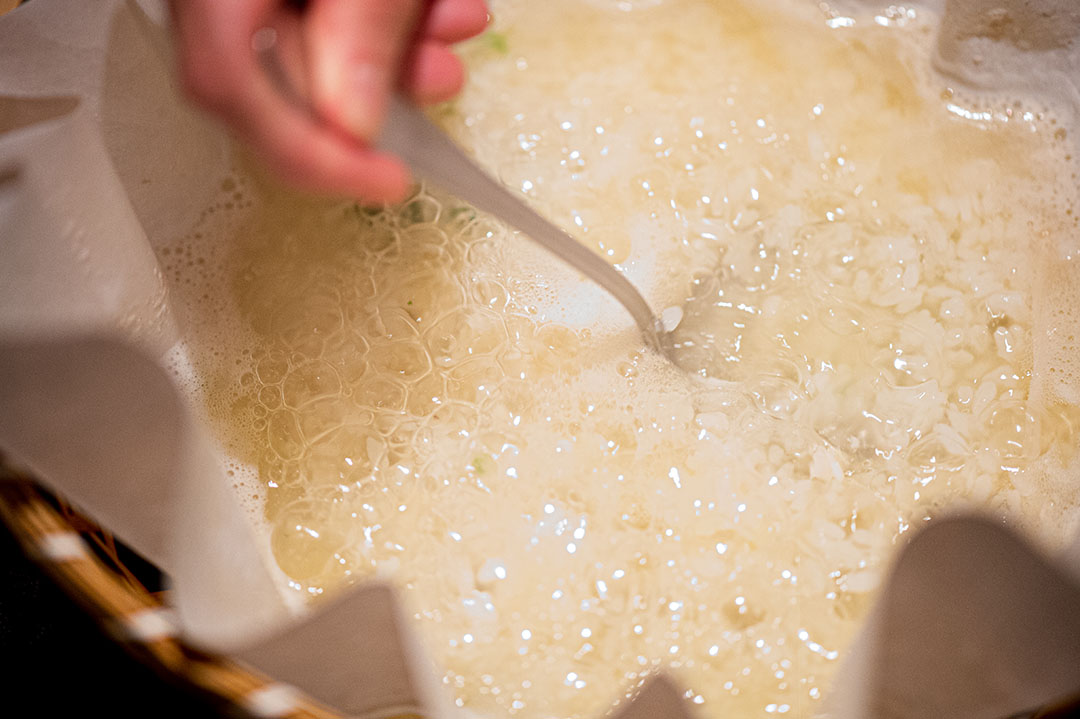
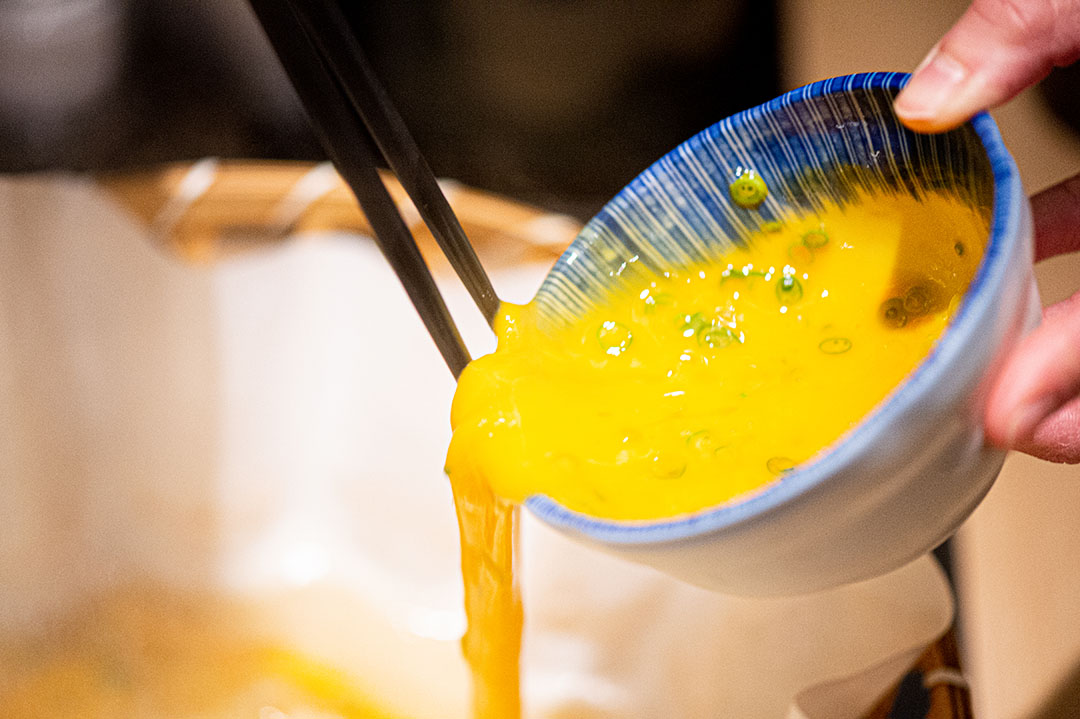
Once the soup returns to the boil, egg is added, and the dish is removed from the heat.
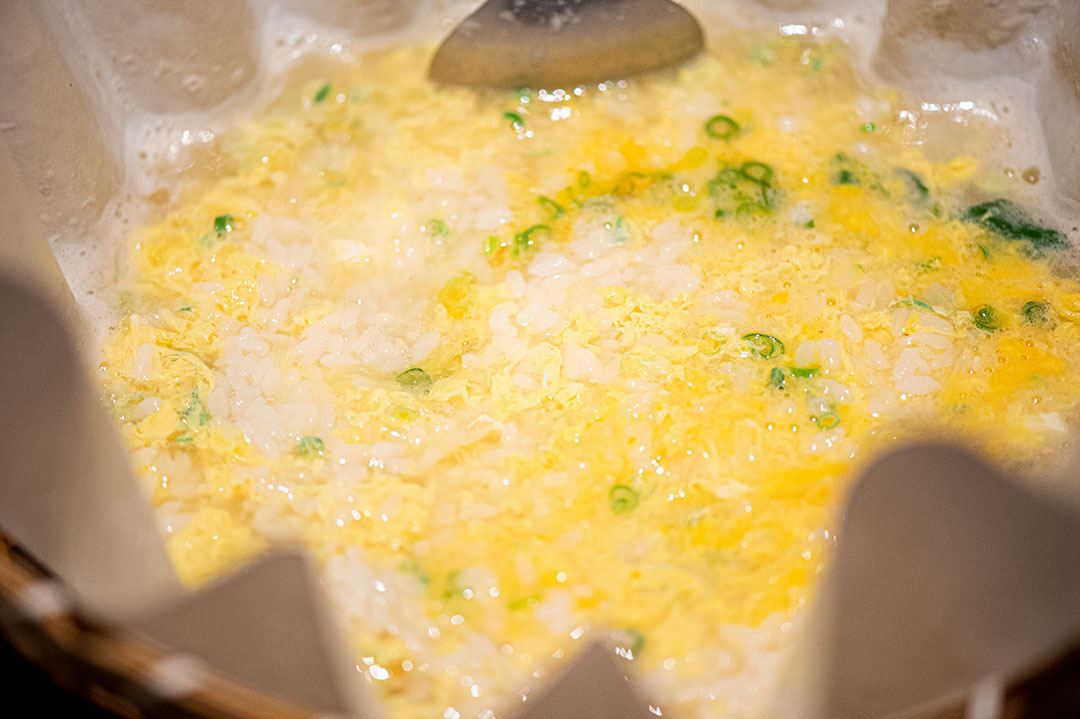
The result is an absolutely scrumptious fugu zosui!
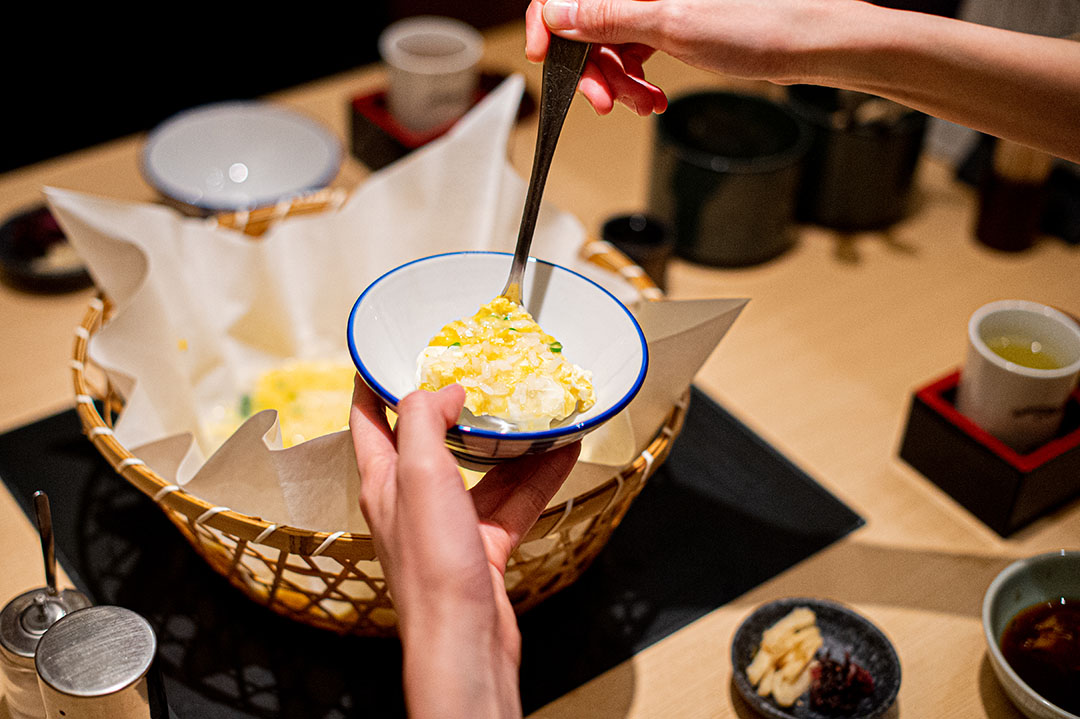
Serve some zosui into your rice bowl and enjoy.
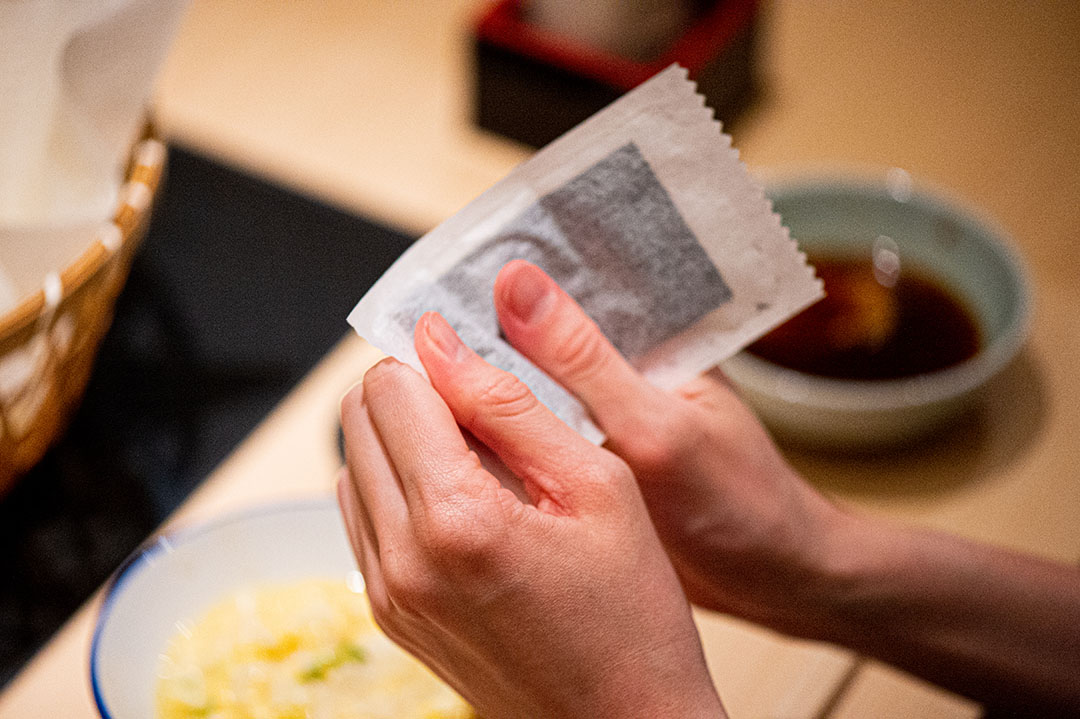

Slices of nori (toasted seaweed) are included with the zosui. Before opening the wrapper, press with your hands to break the nori into small bits to top your bowl.
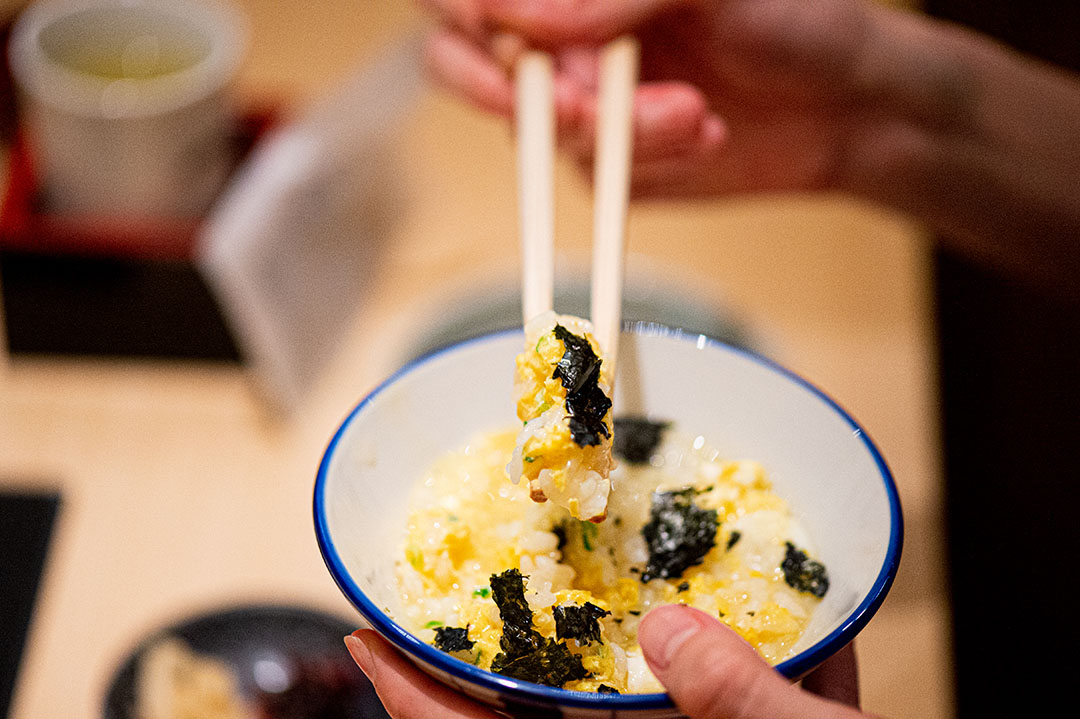
While zosui is generally translated as “rice soup”, it’s often eaten with chopsticks in Japan.
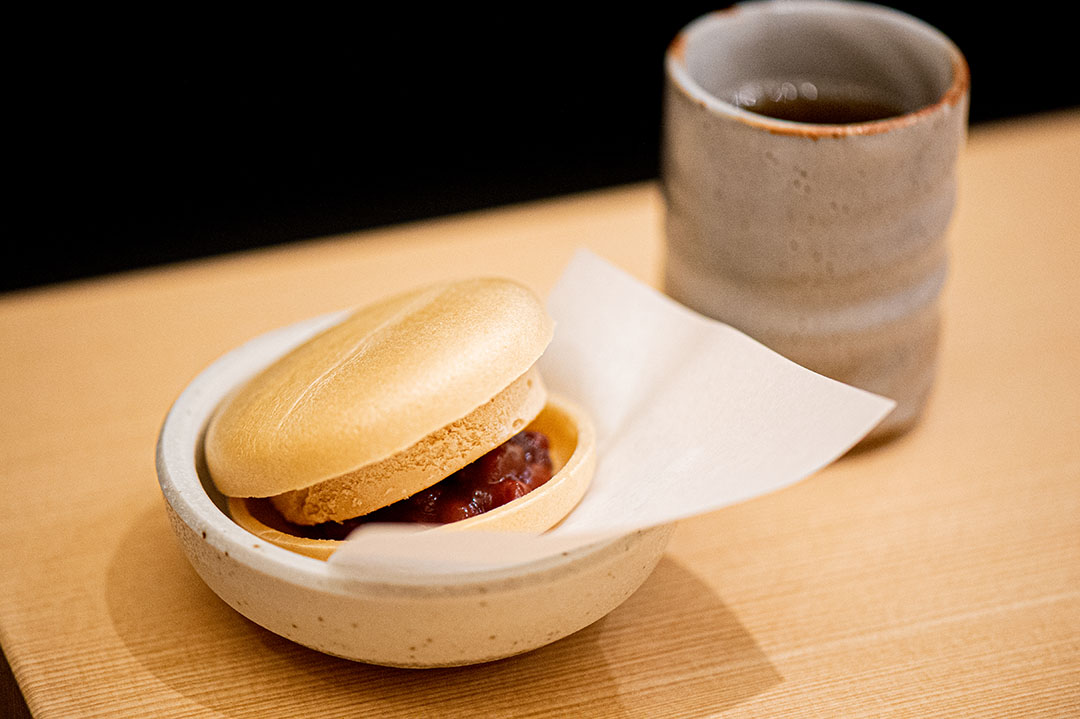
The Oyogi Torafugu Course also includes a dessert of monaka wafer filled with adzuki beans and ice cream.
Enjoy a cup of tea alongside.
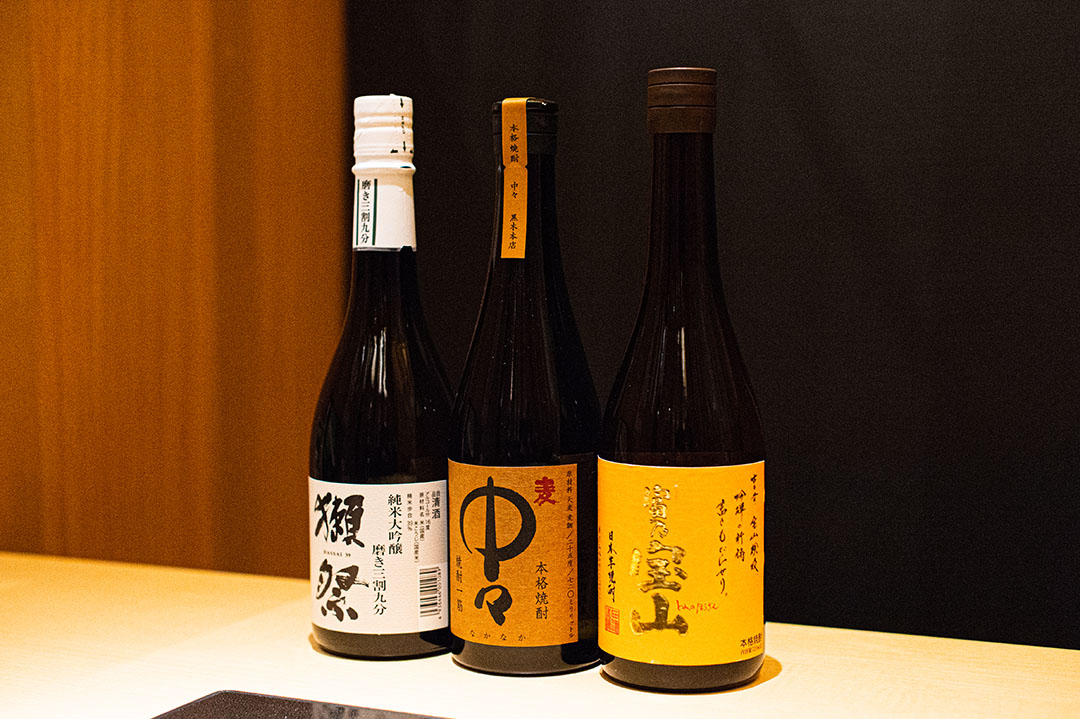
In addition to Dassai nihonshu(pictured left), Torafugu-tei also serves a selection of shochu (distilled liquor) such as Nakanaka (center) and Tominohozan (right), which are both local to Kyushu. They are a superb match for fugu cuisine, so please give them a try.
What do you think of these methods of enjoying fugu cuisine? We’ve heard that recently, fugu cuisine is becoming popular among pescatarians (vegetarians who also eat seafood) visiting Japan from overseas. The next time you visit Japan, please try the Oyogi Torafugu Course at Torafugu-tei!
* The published information is current as of February 2023. Prices and other details are subject to change.
Torafugu-tei serves the highest-quality fugu cuisine using domestically-sourced torafugu (tiger pufferfish). Forty locations are found throughout Tokyo, Kanagawa, Chiba, and Saitama. No effort is spared to source live tiger pufferfish directly from the renowned fish nurseries of Hirado, Nagasaki Prefecture. Each location is permanently staffed by licensed fugu chefs, who serve fugu cuisine at the very peak of freshness.
share:










